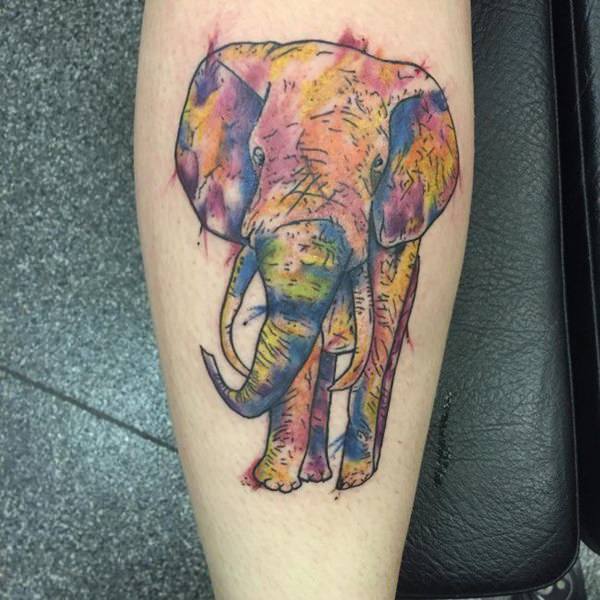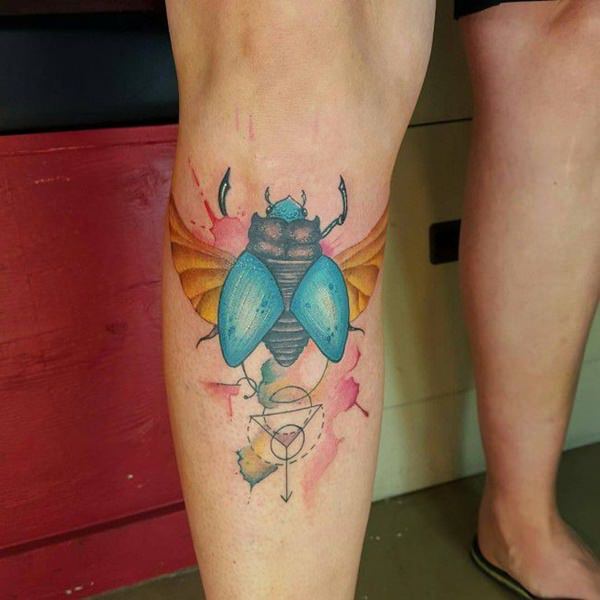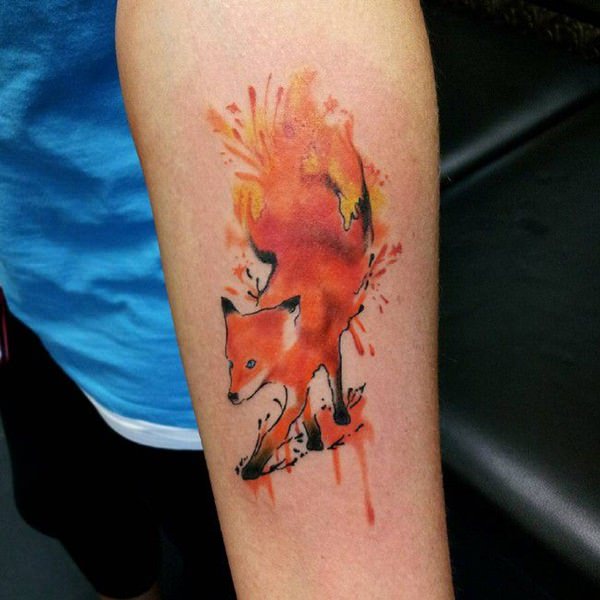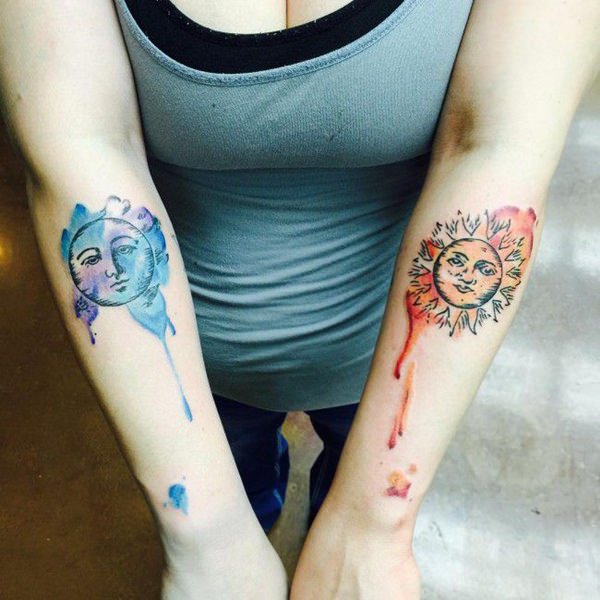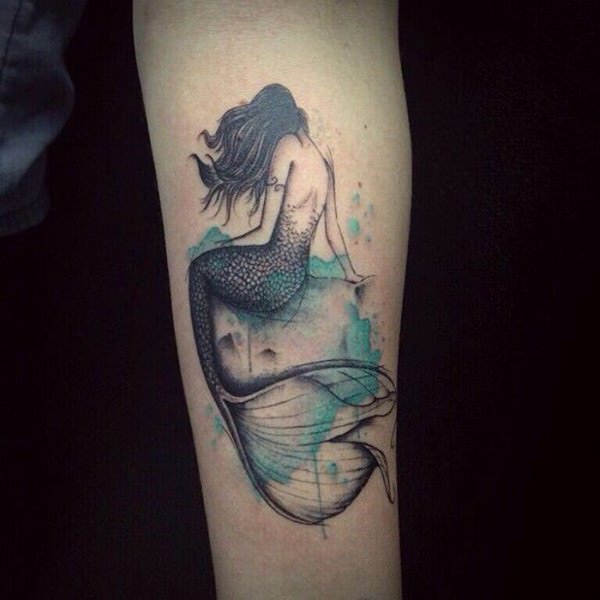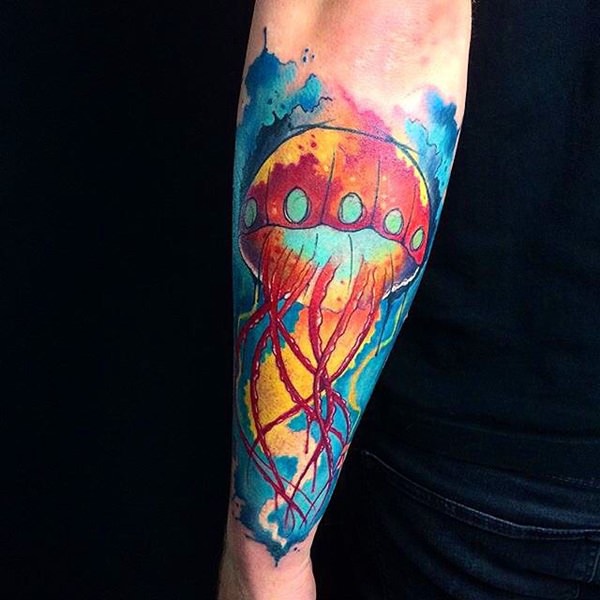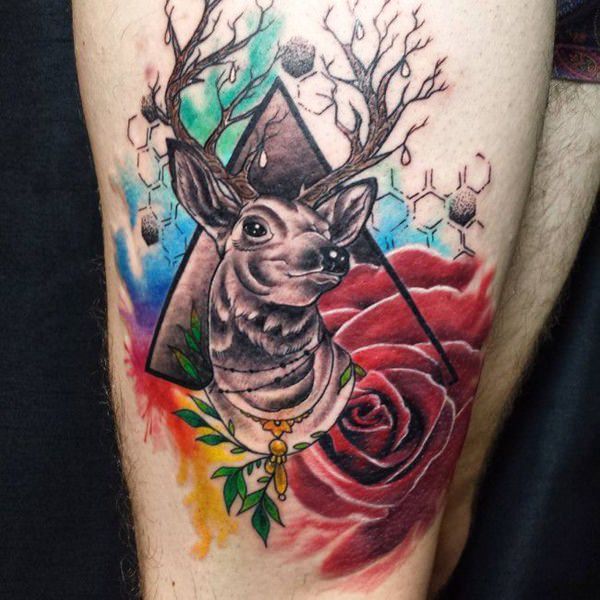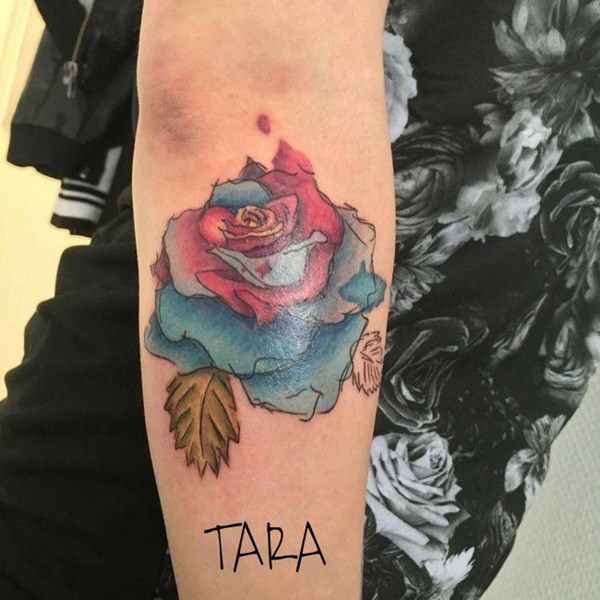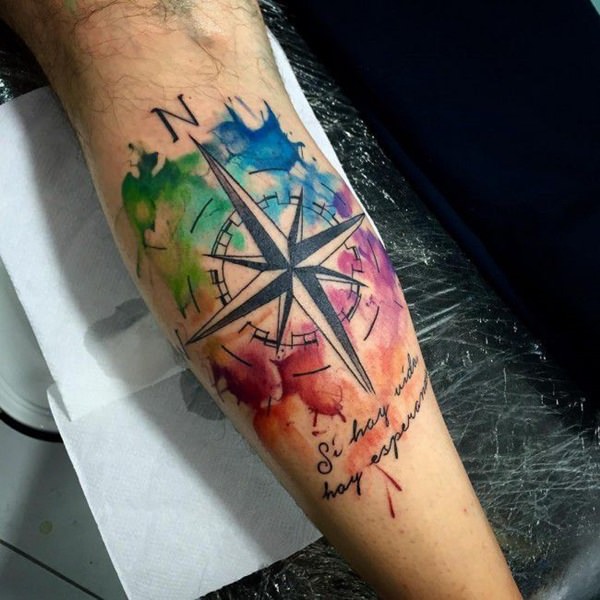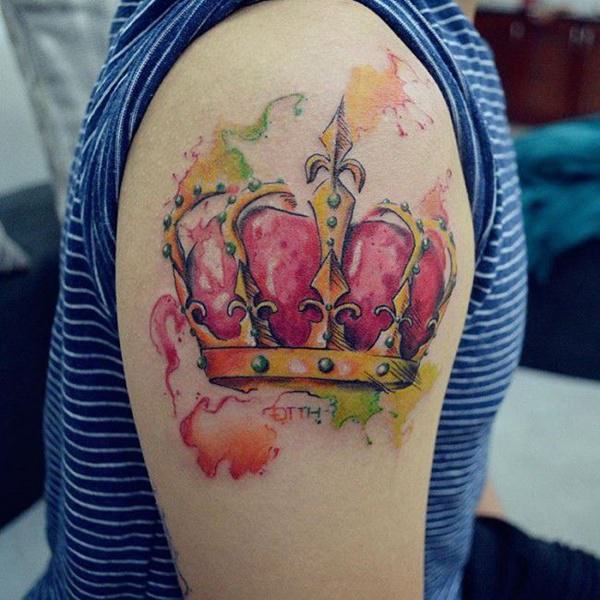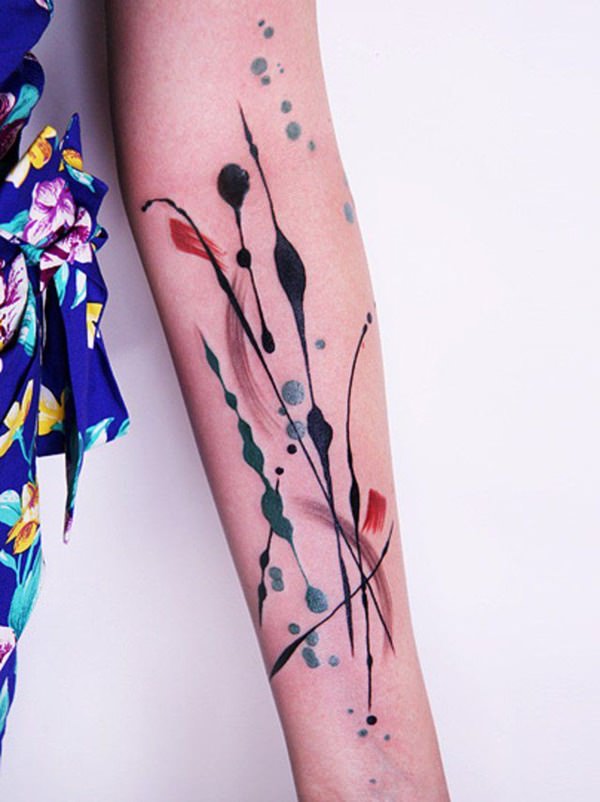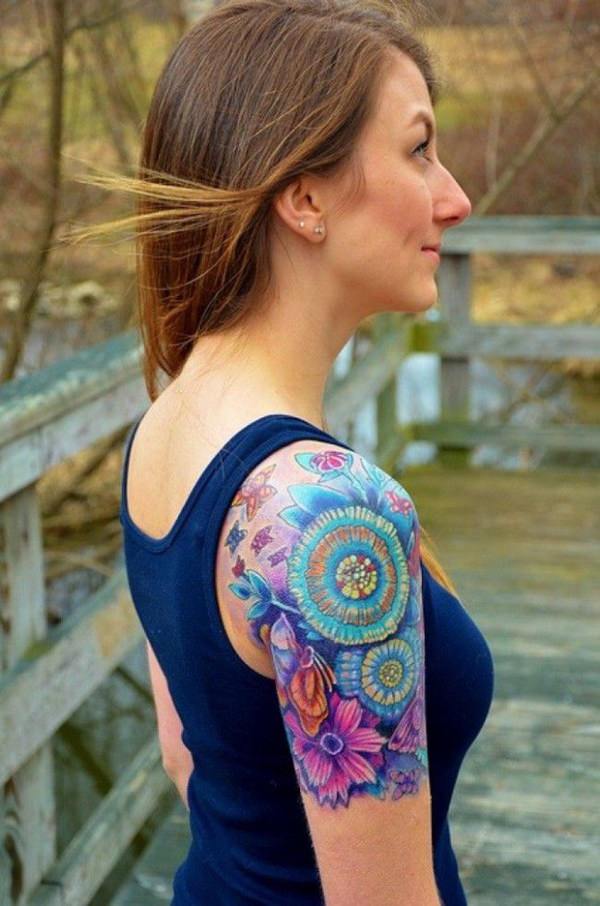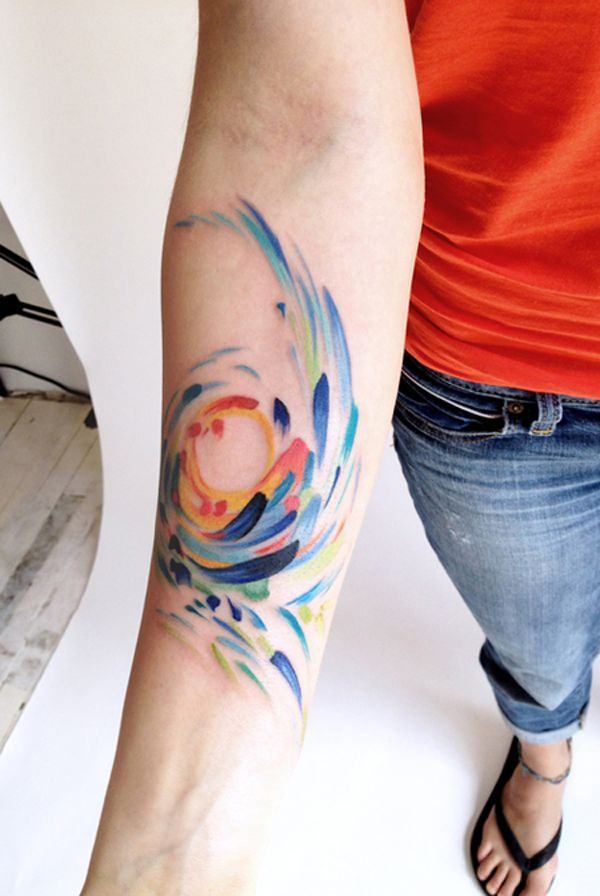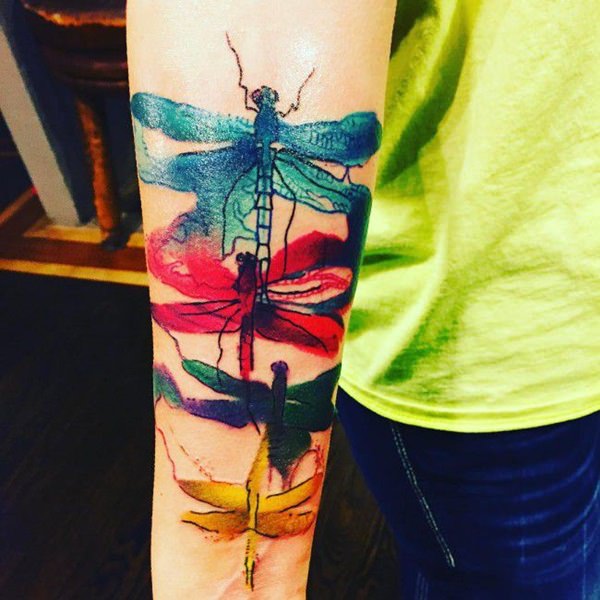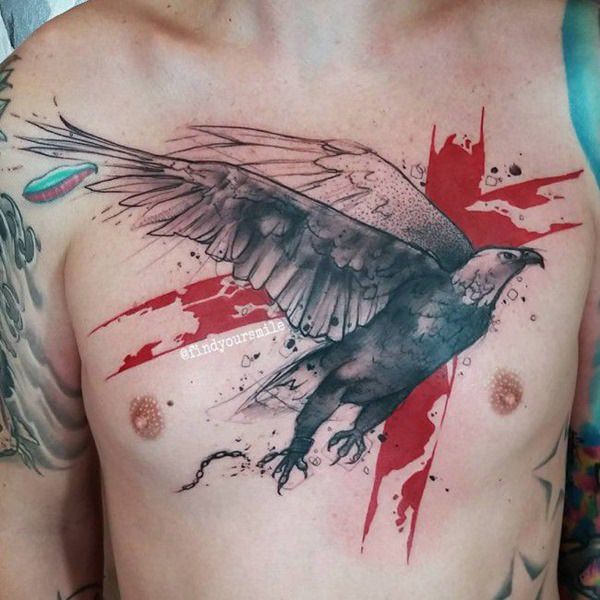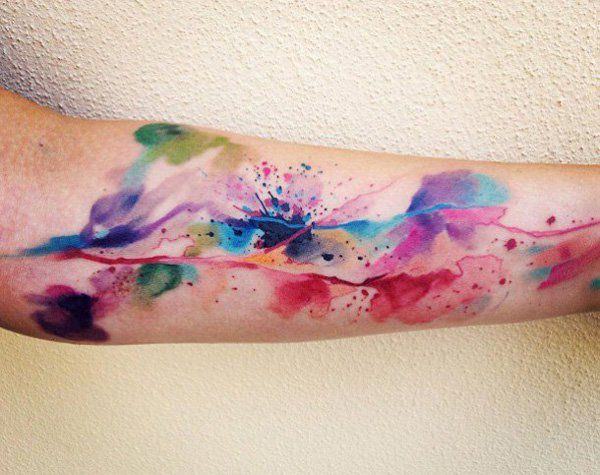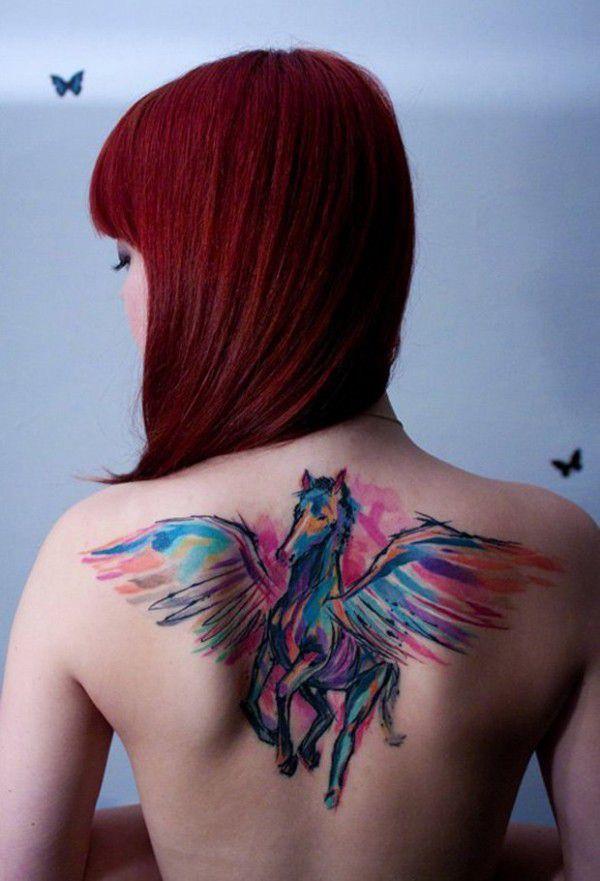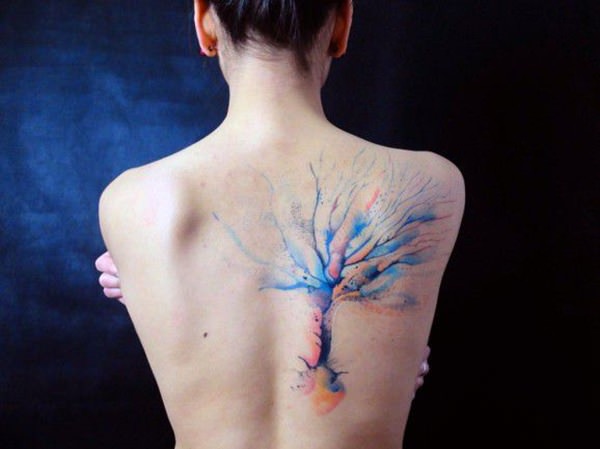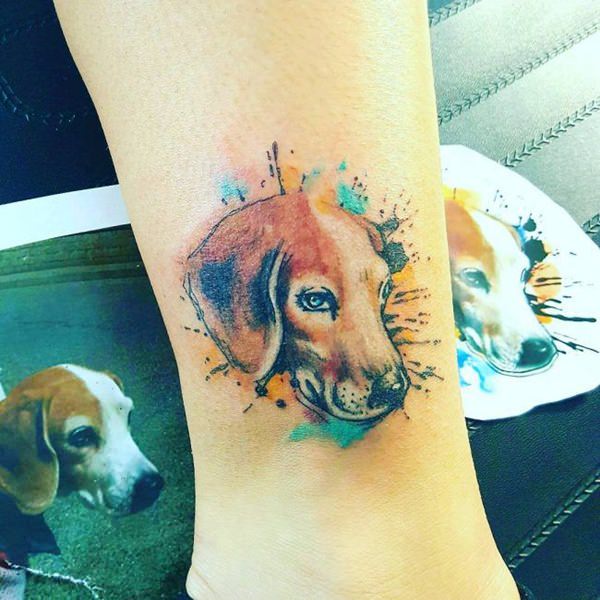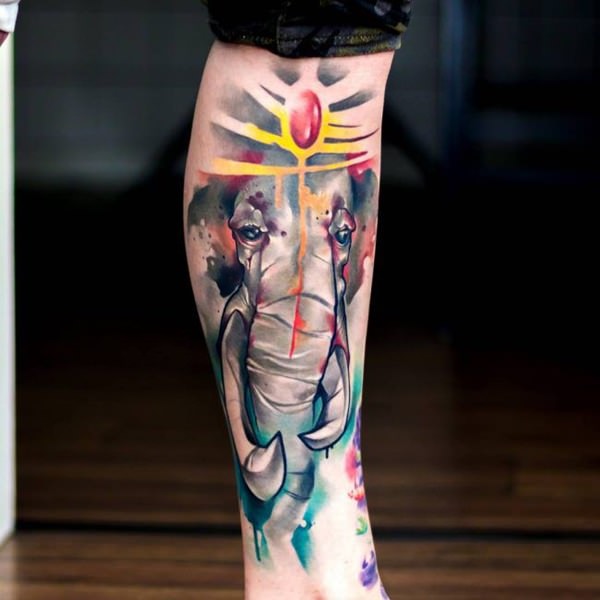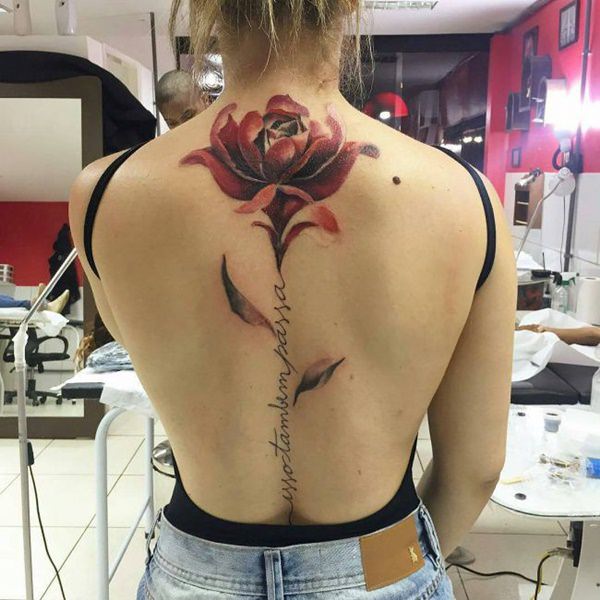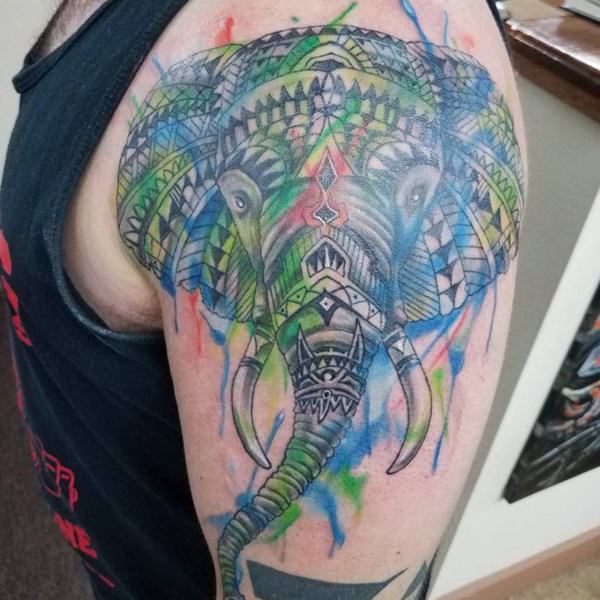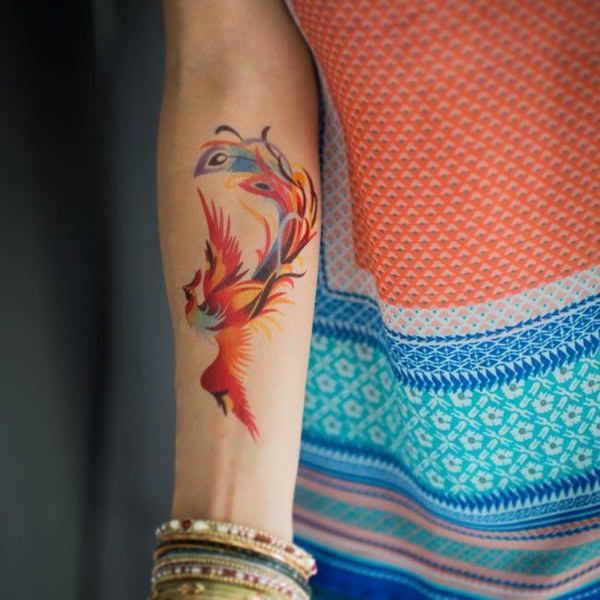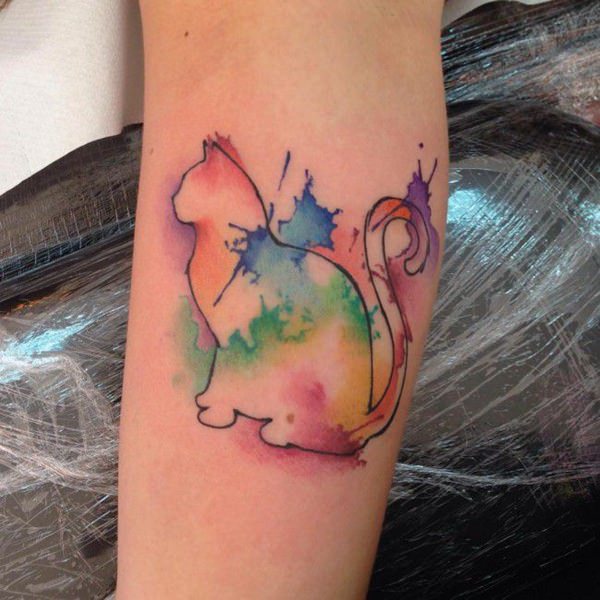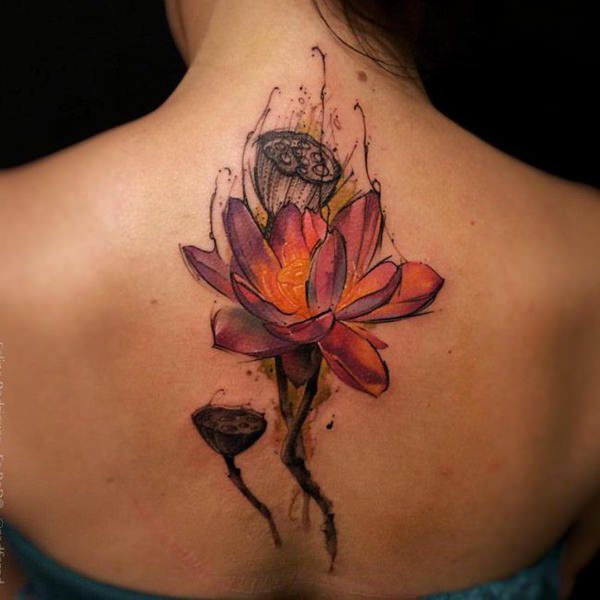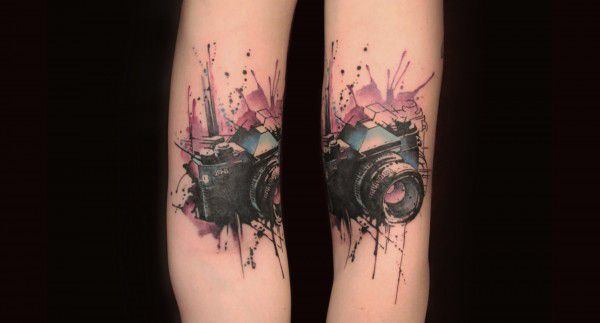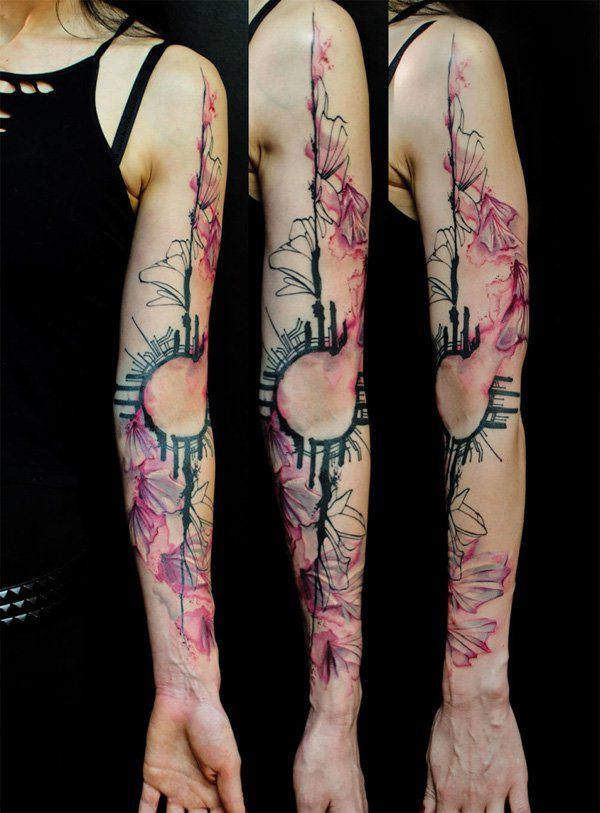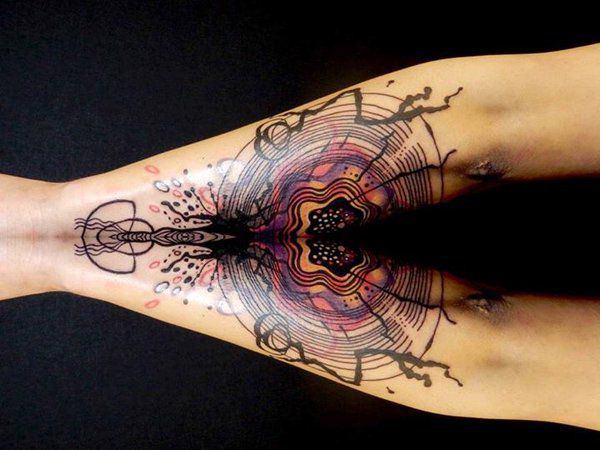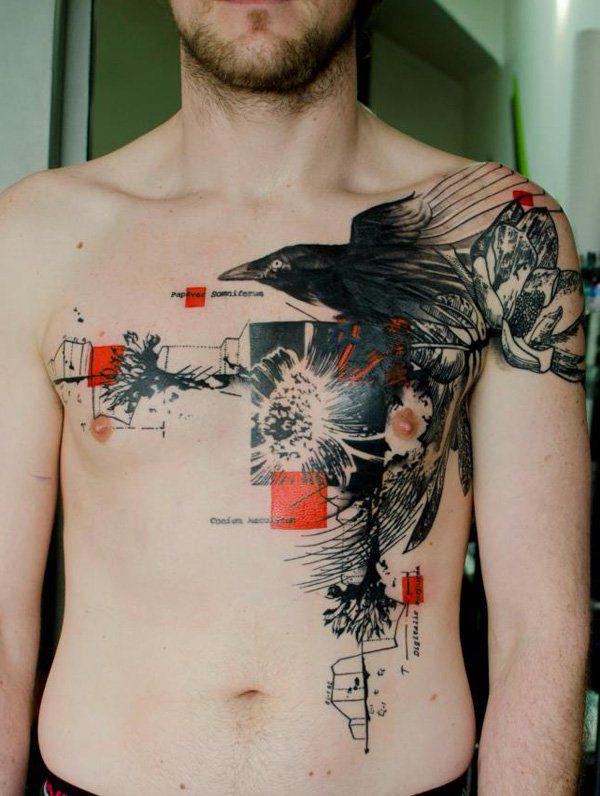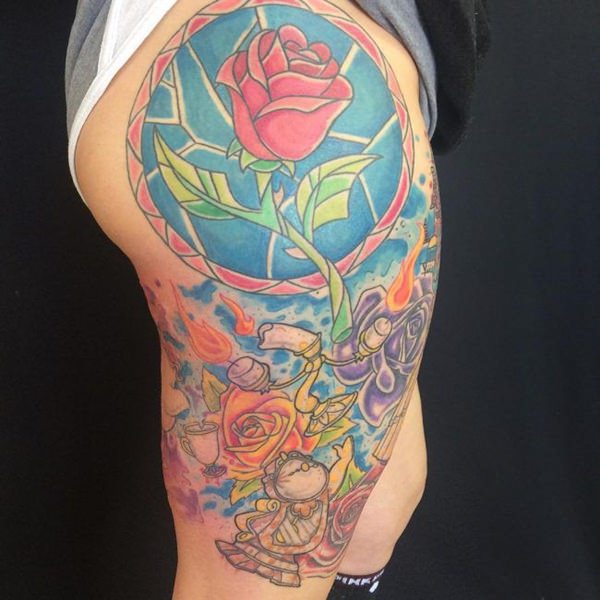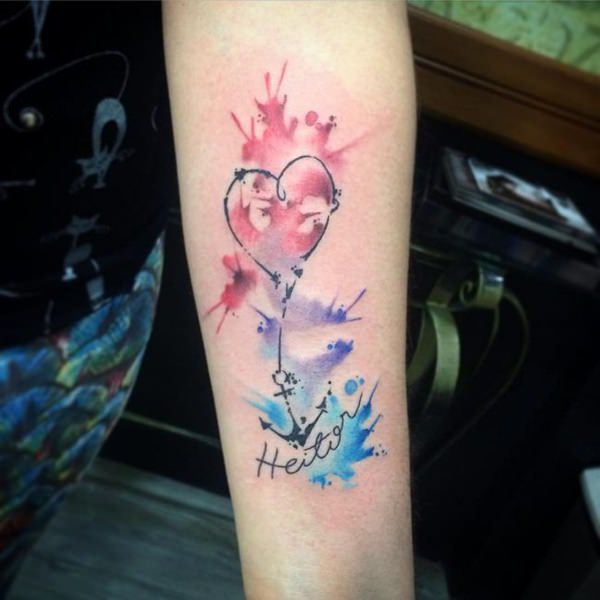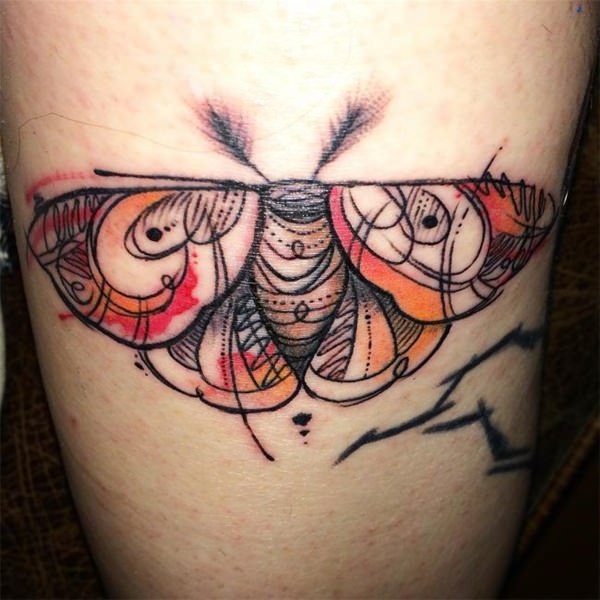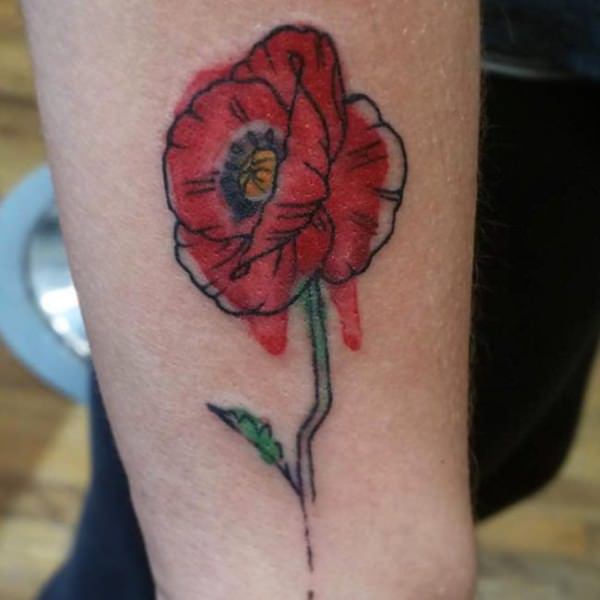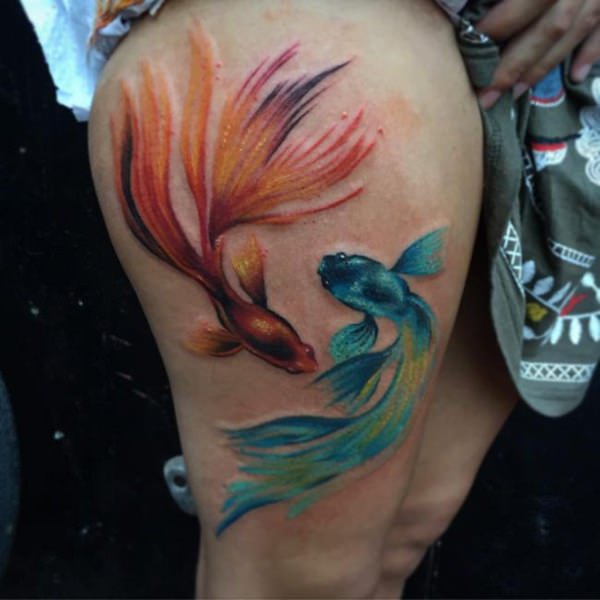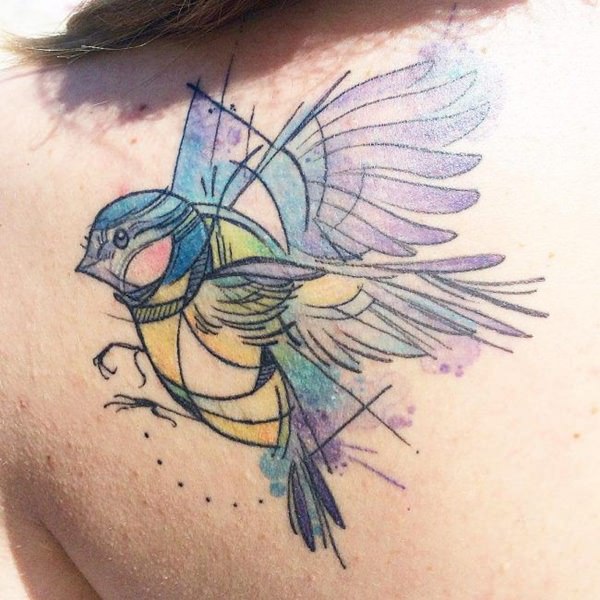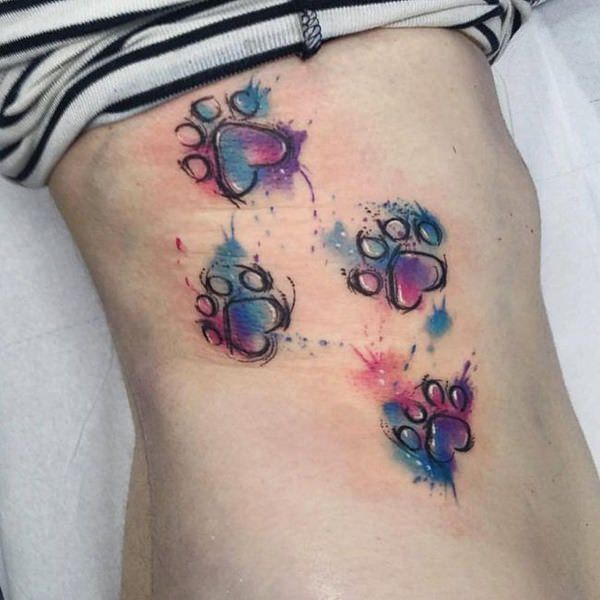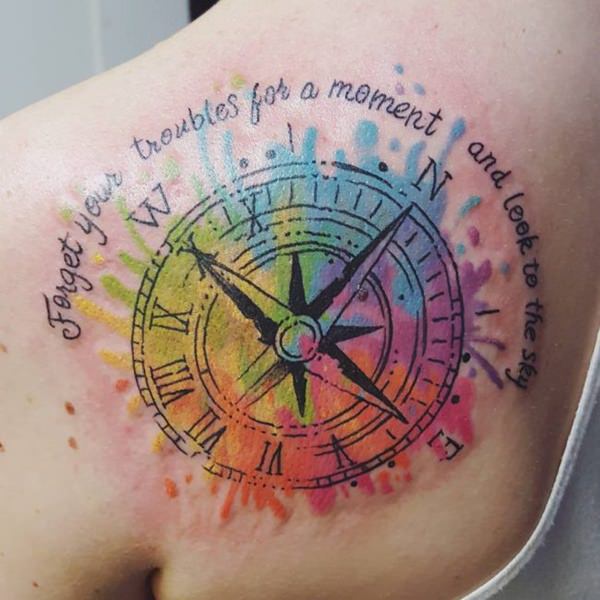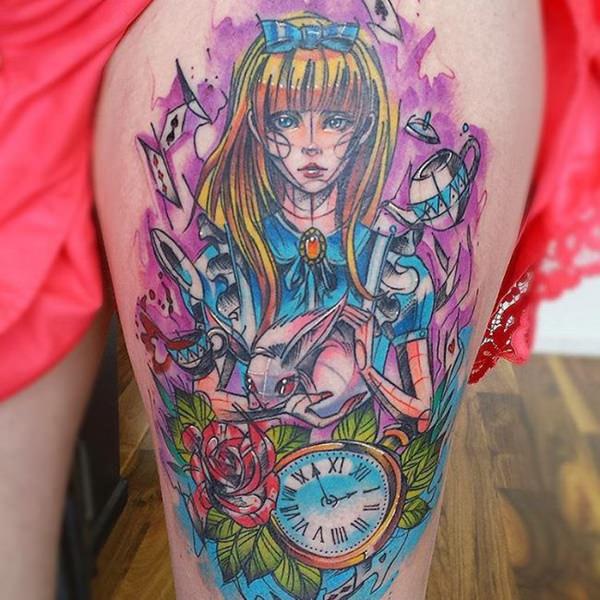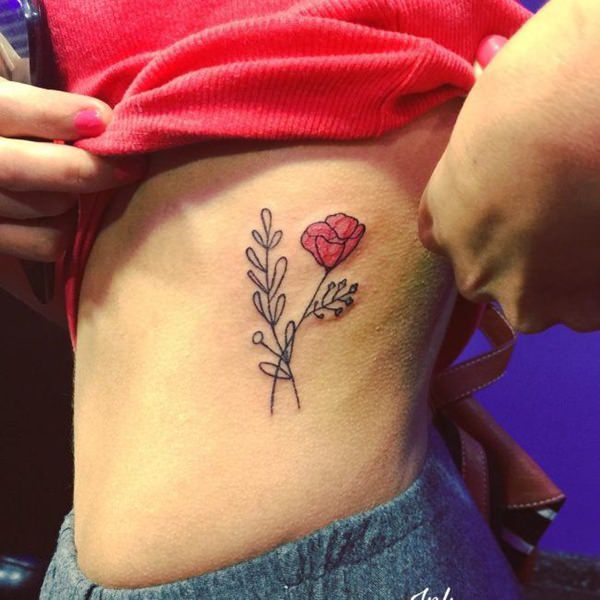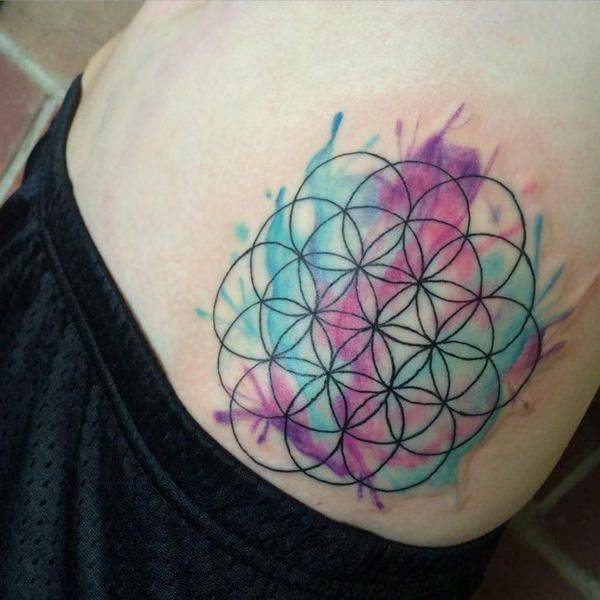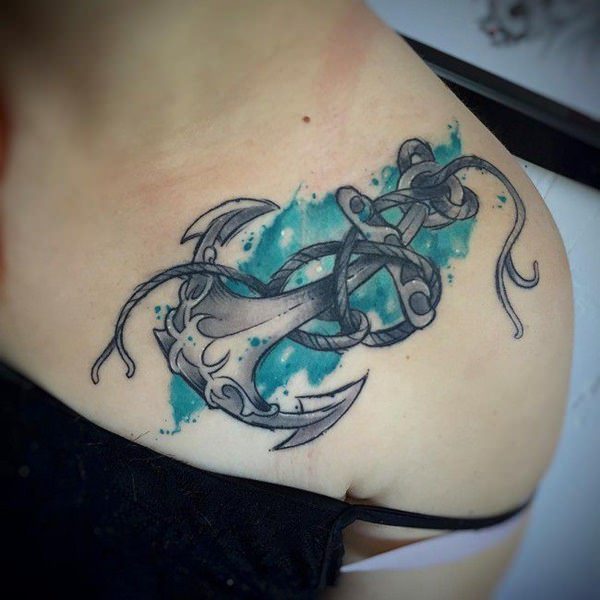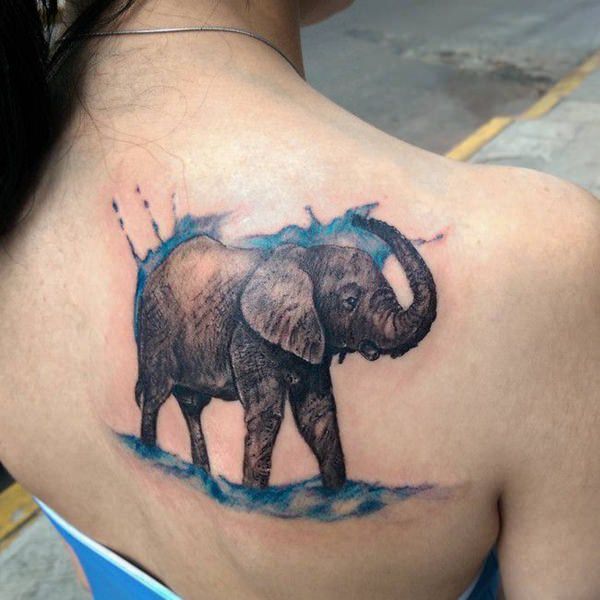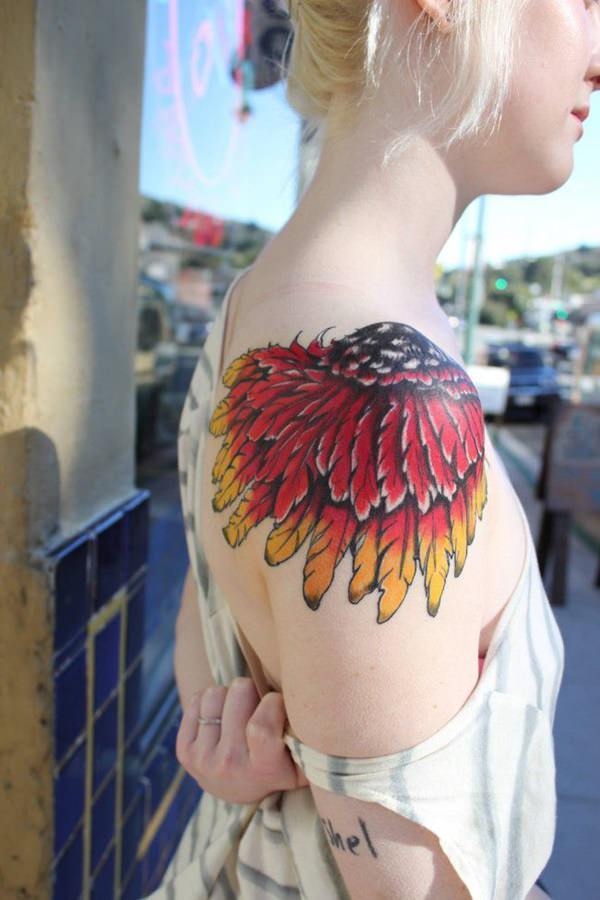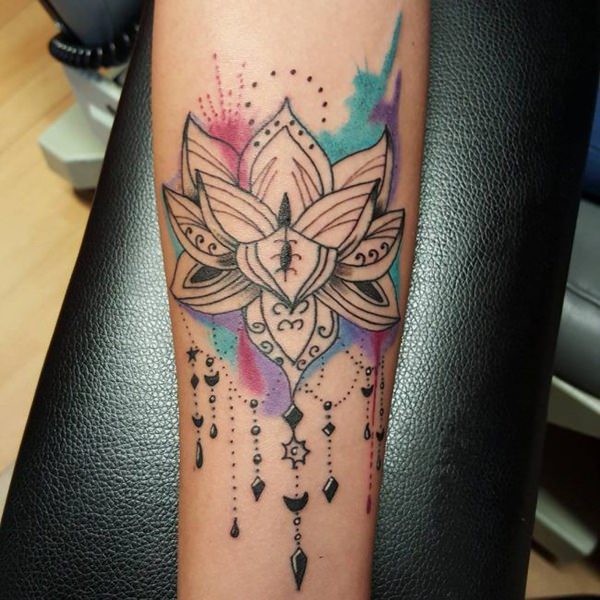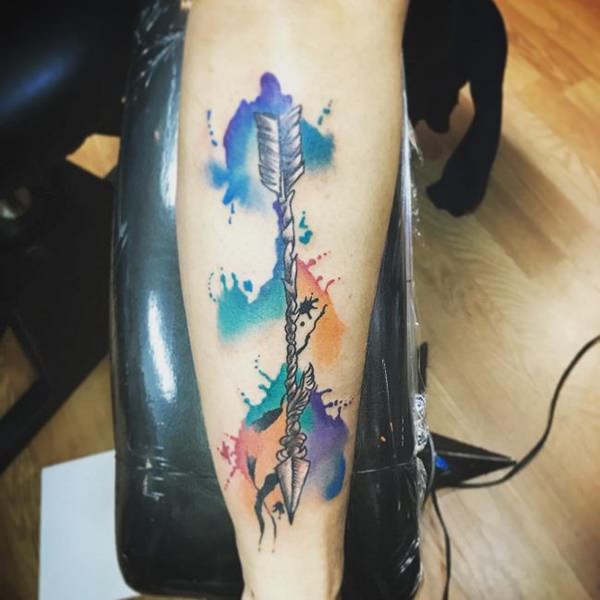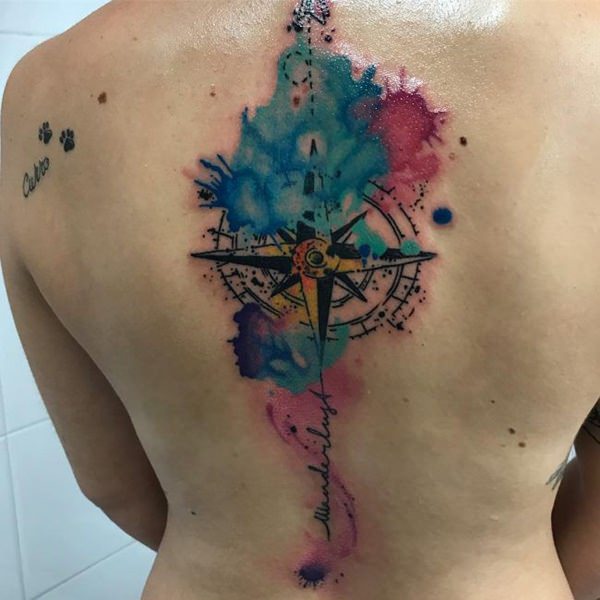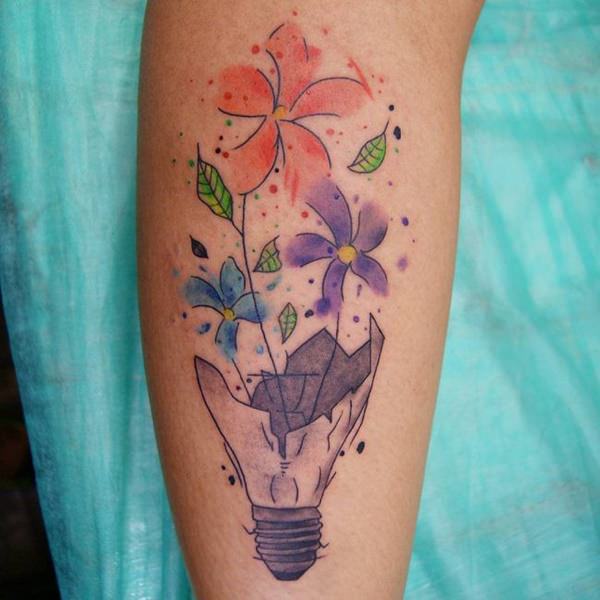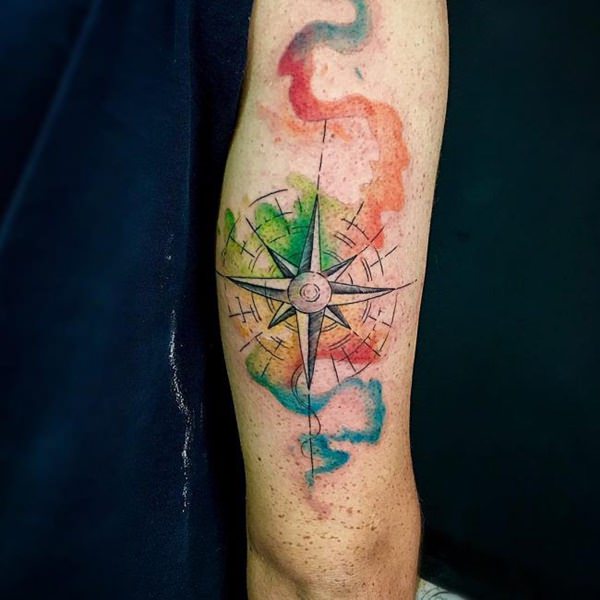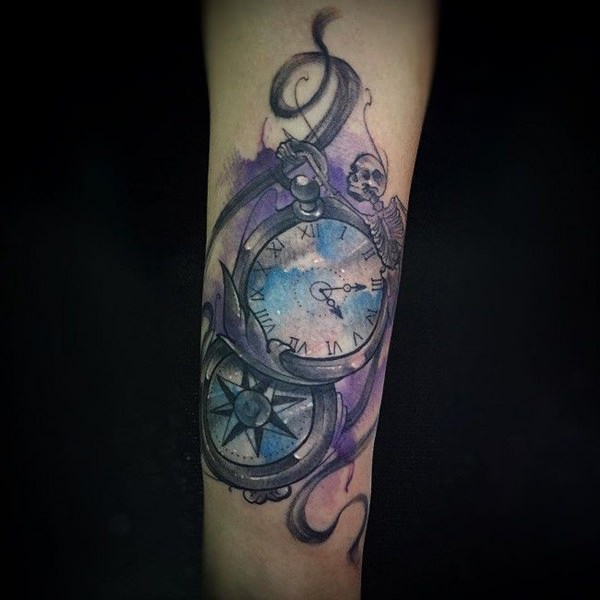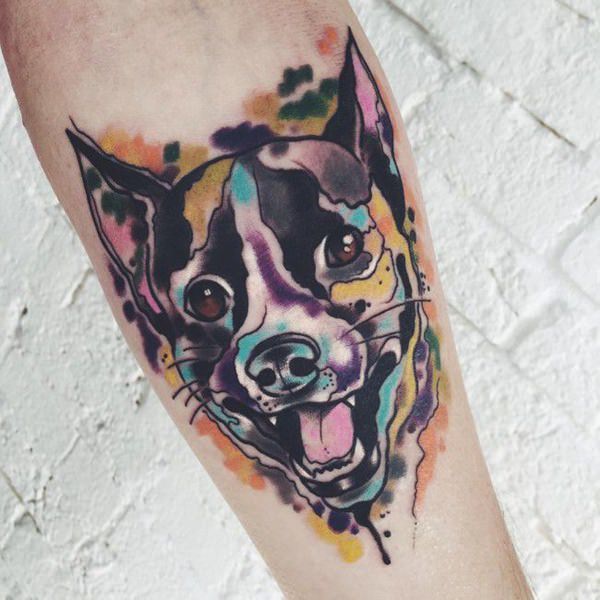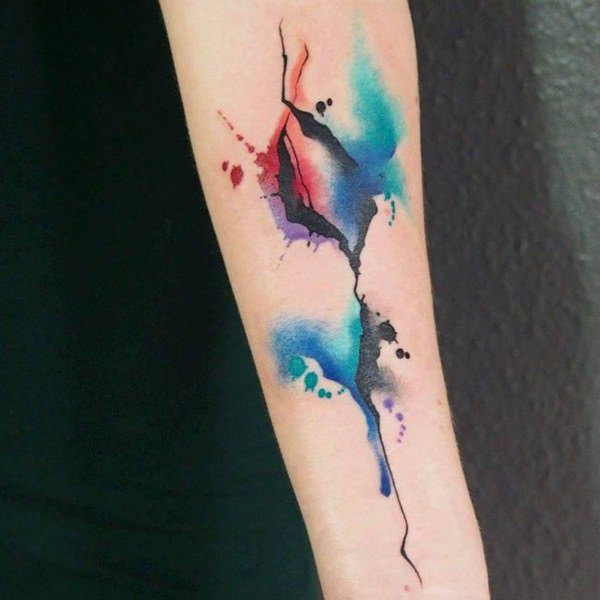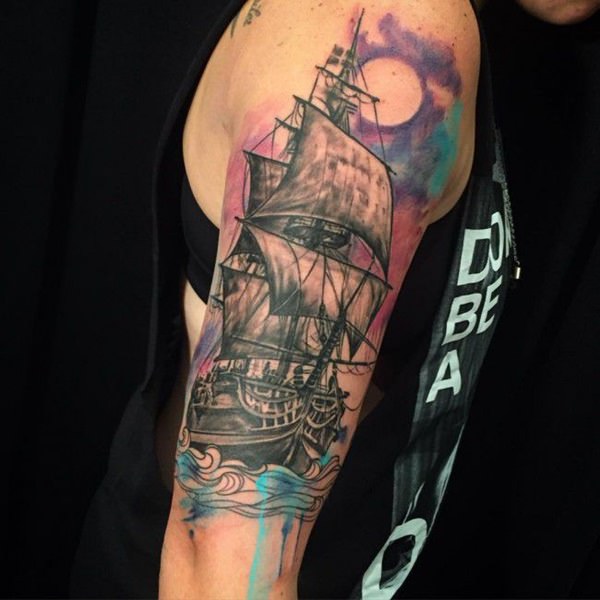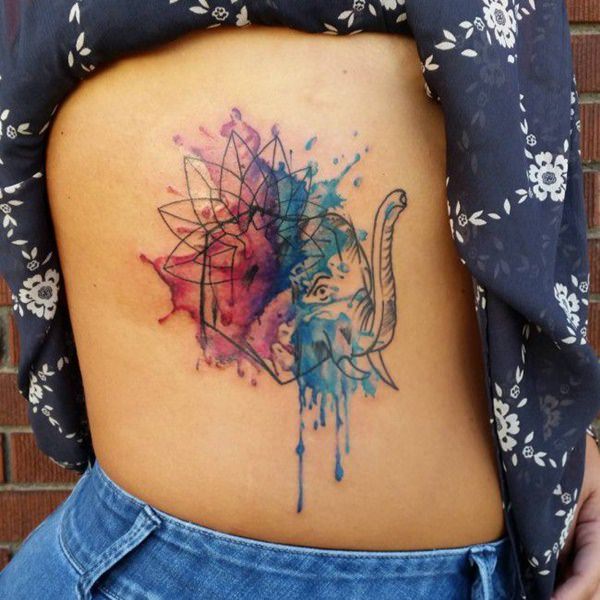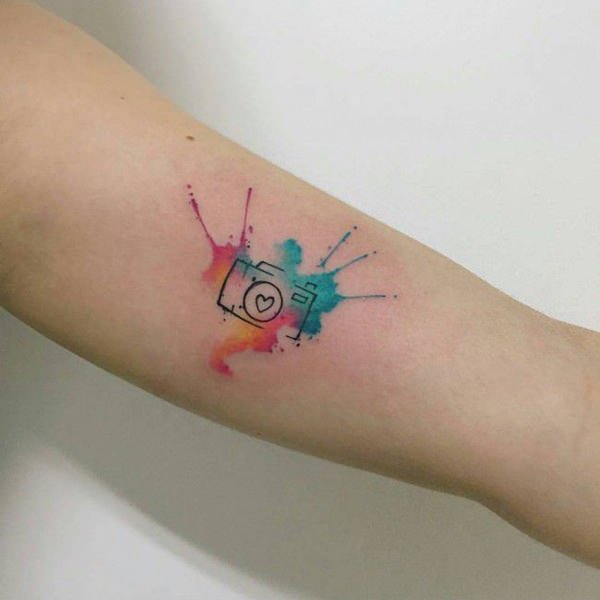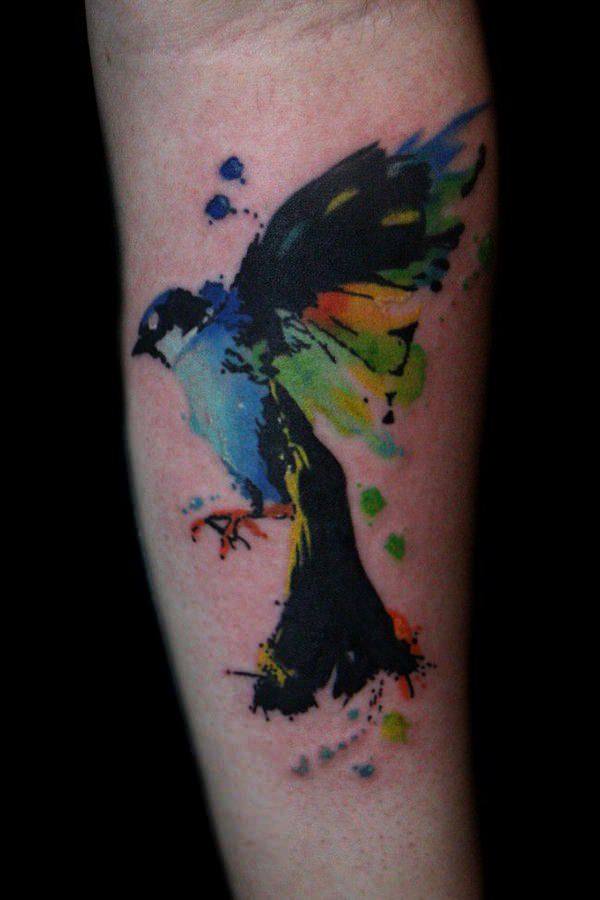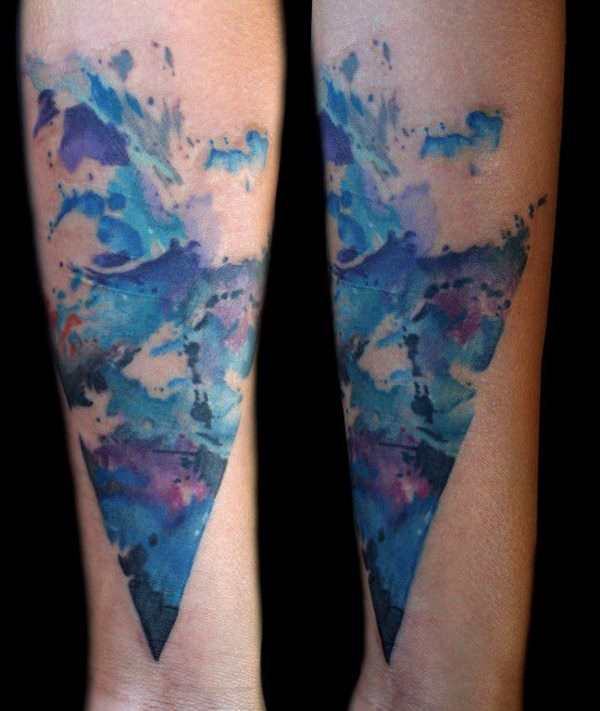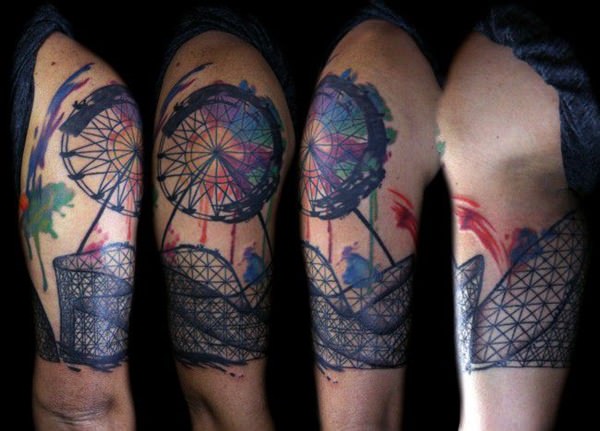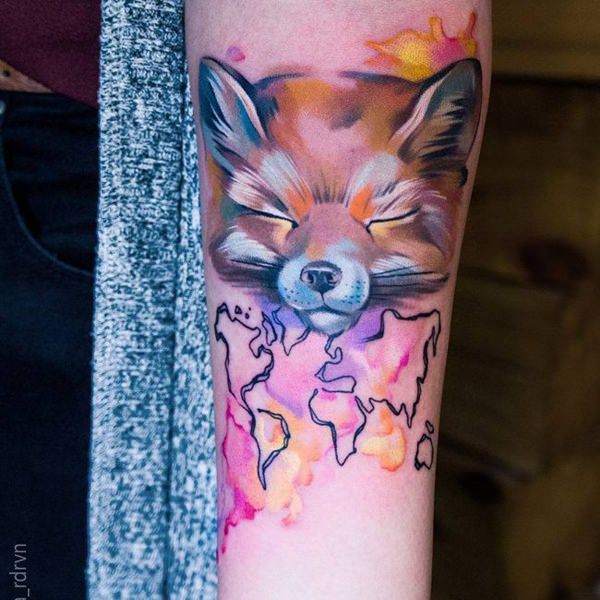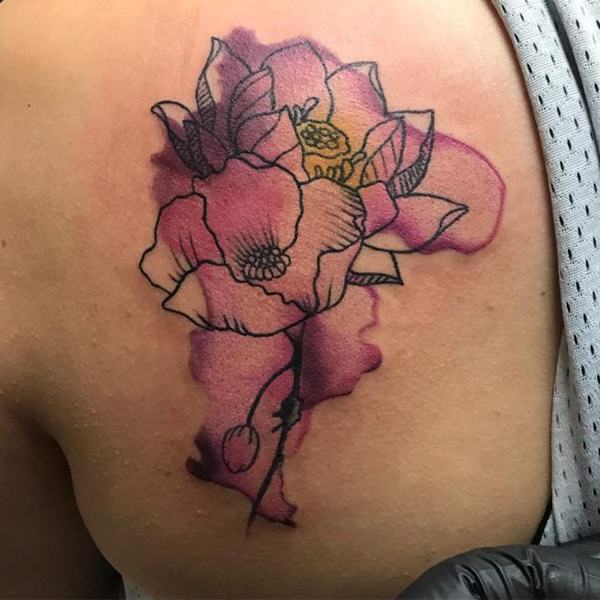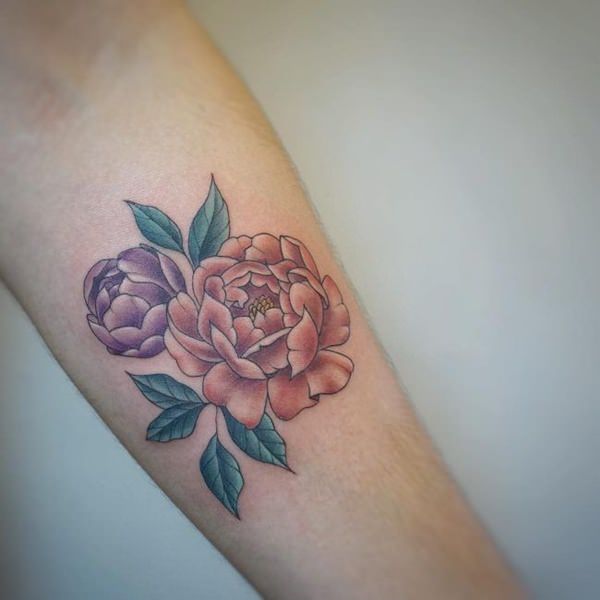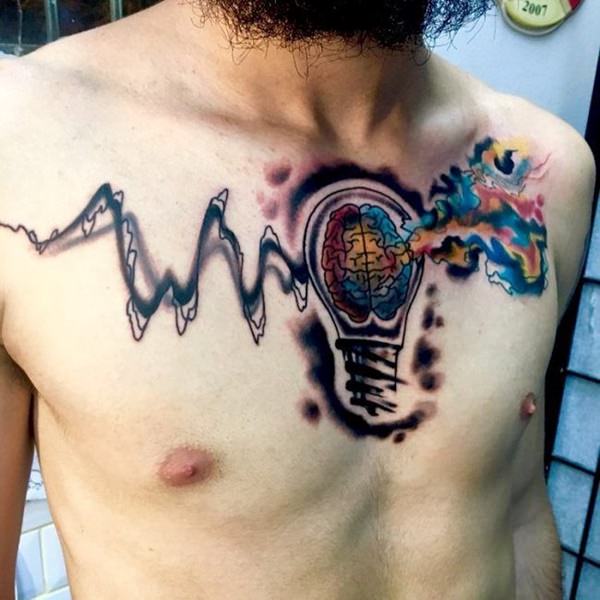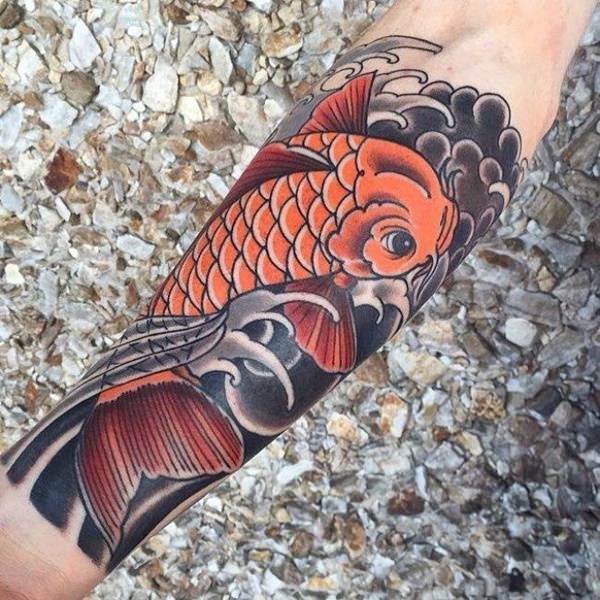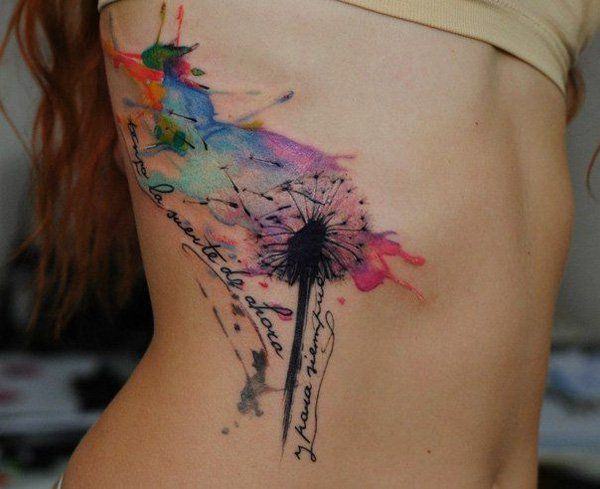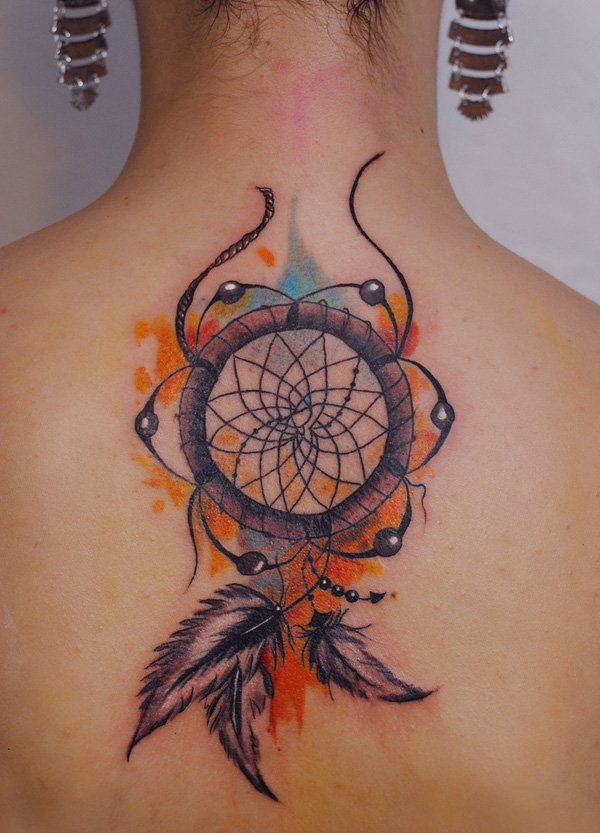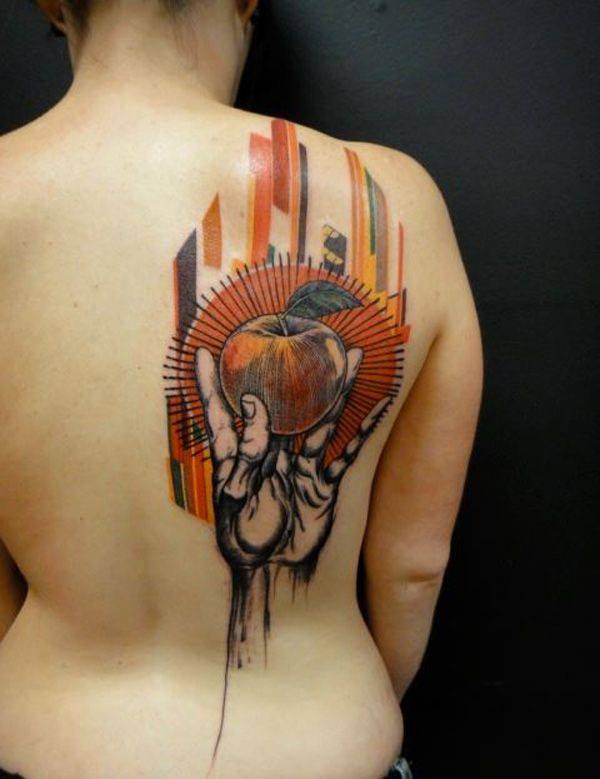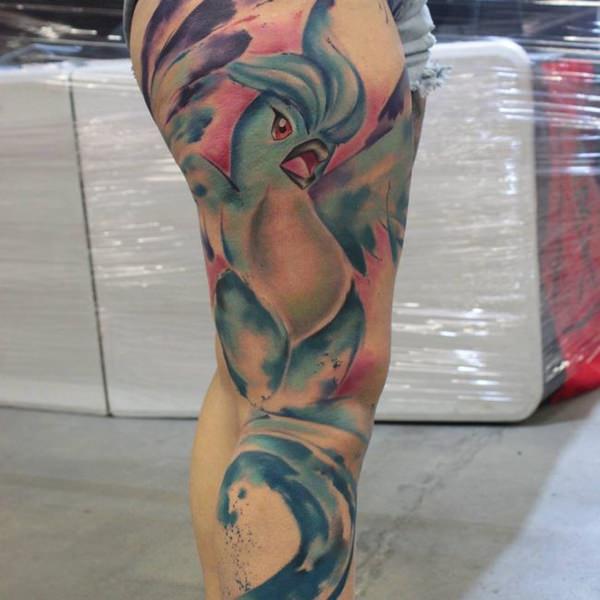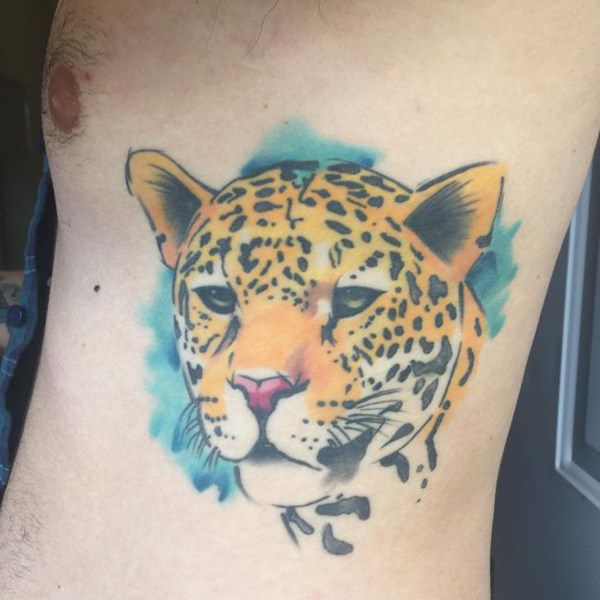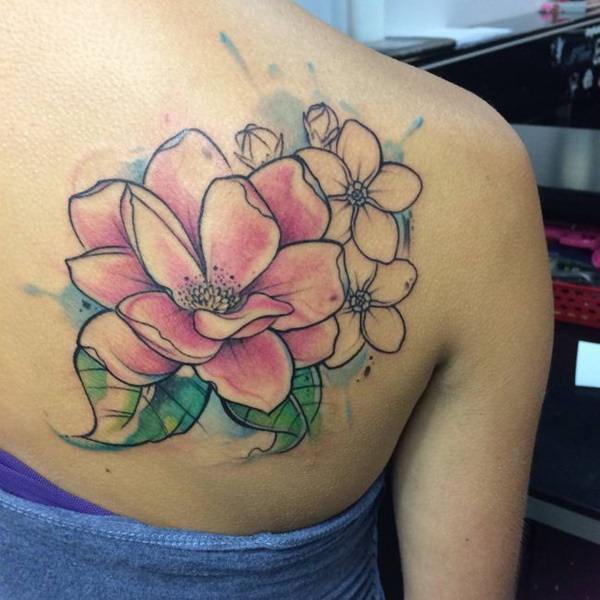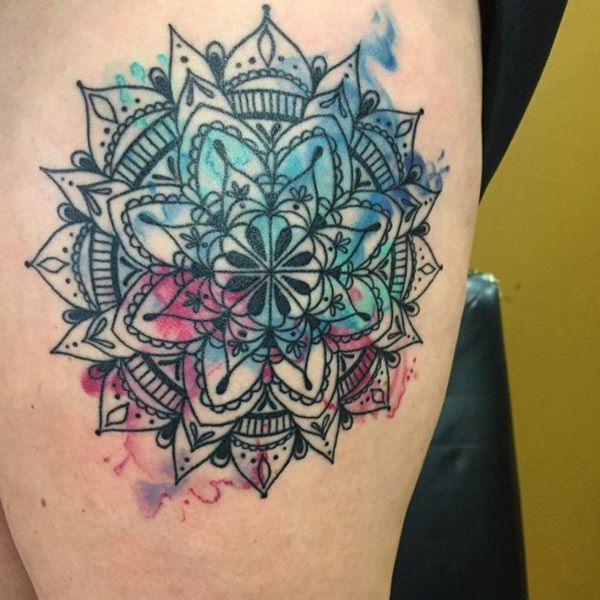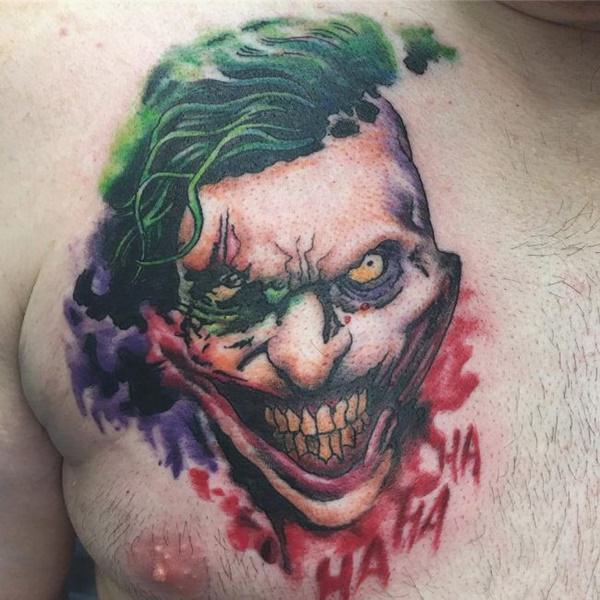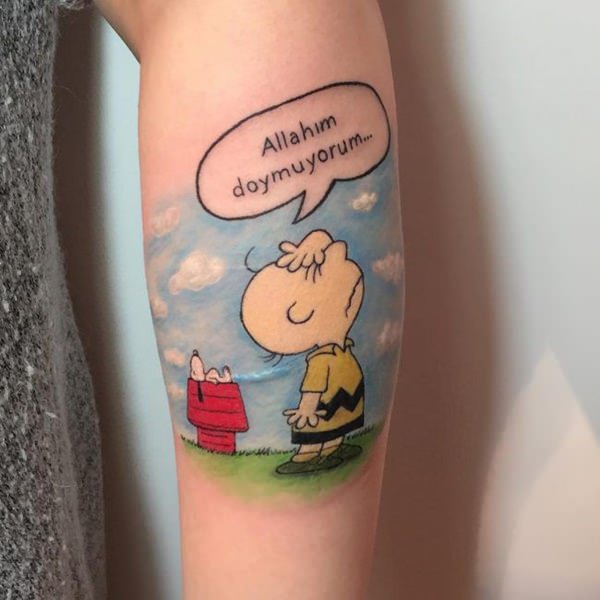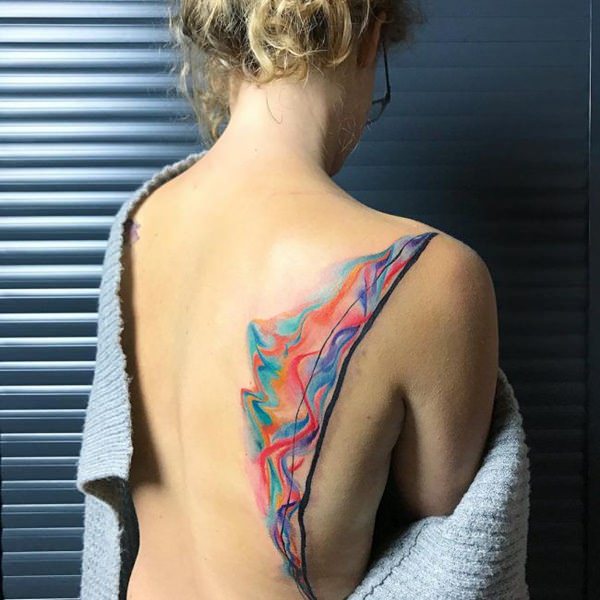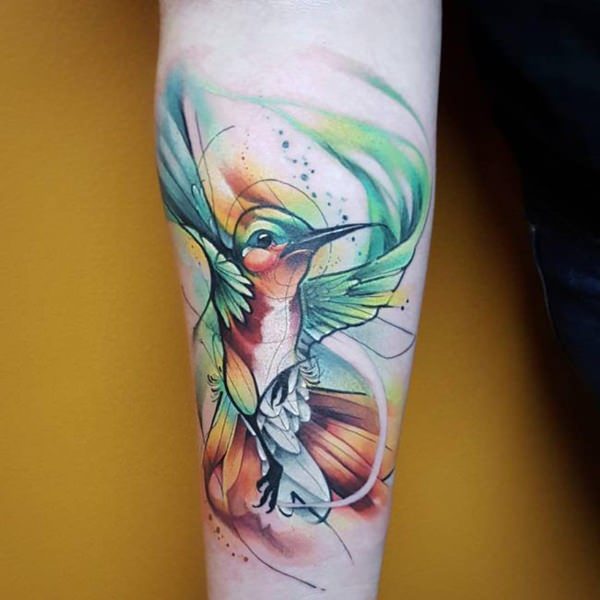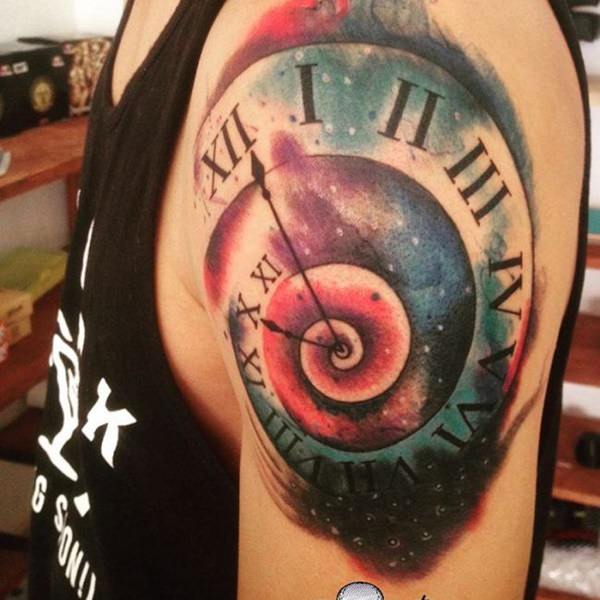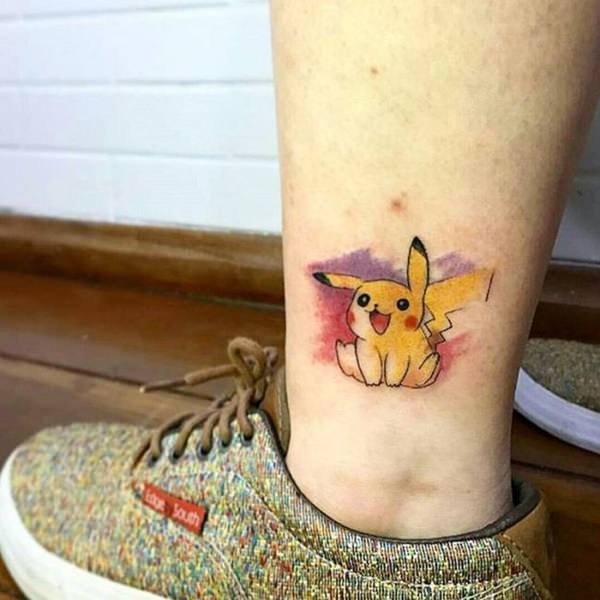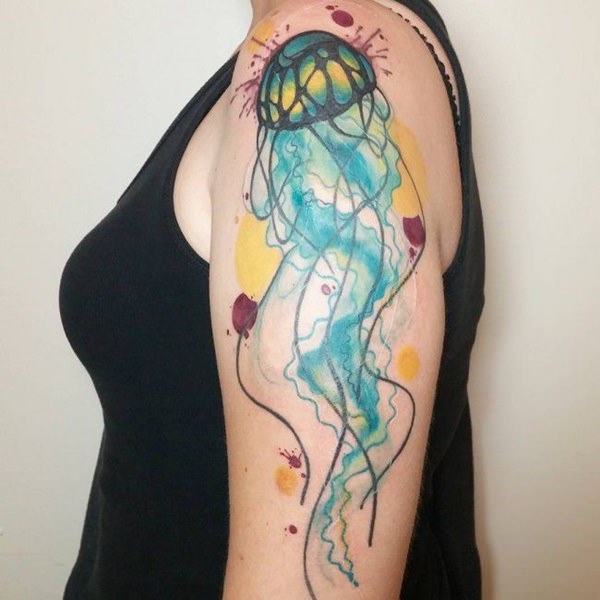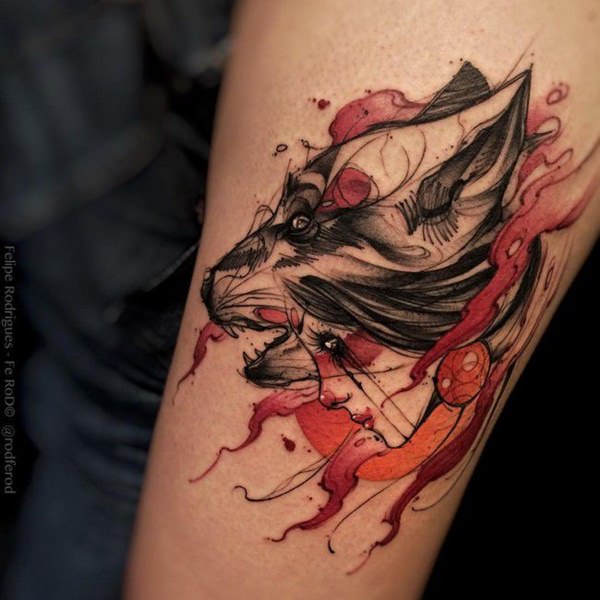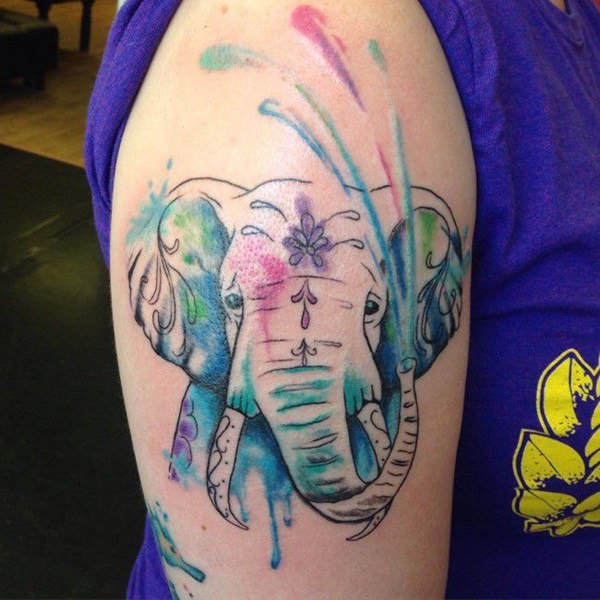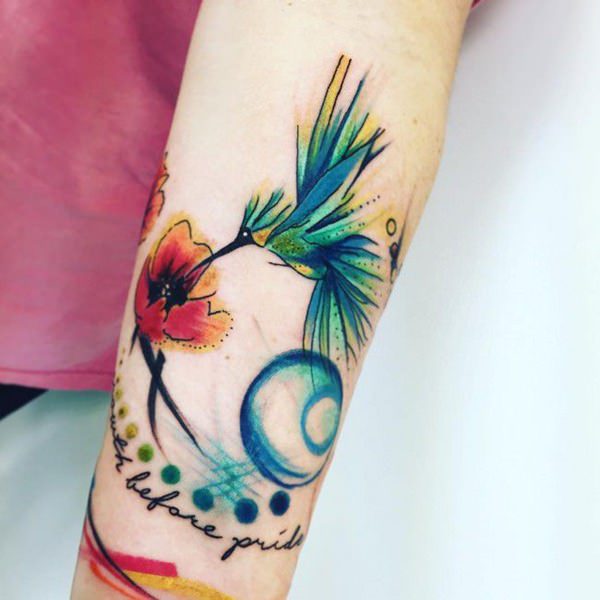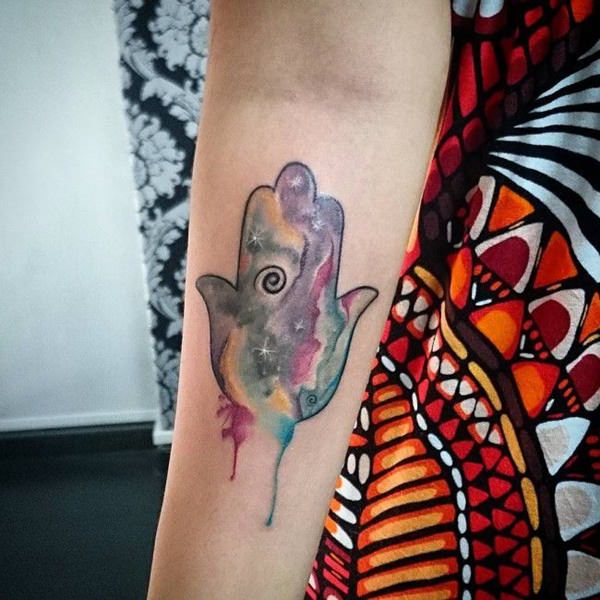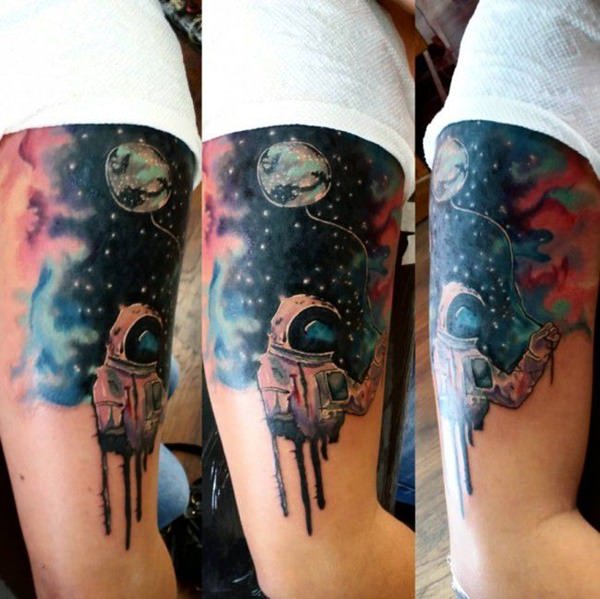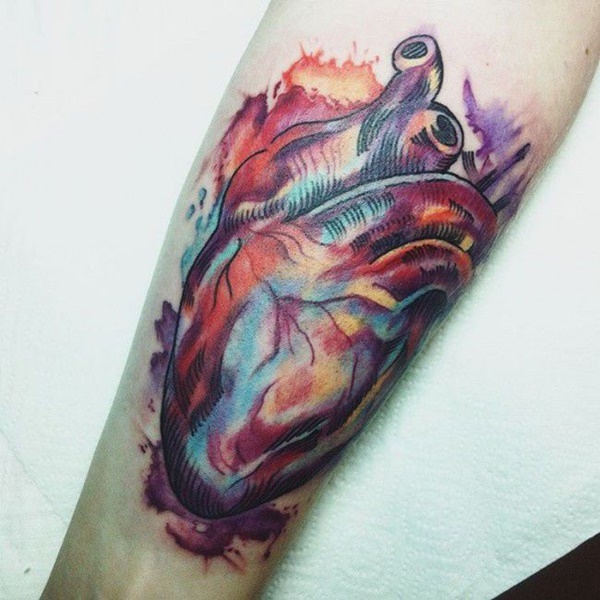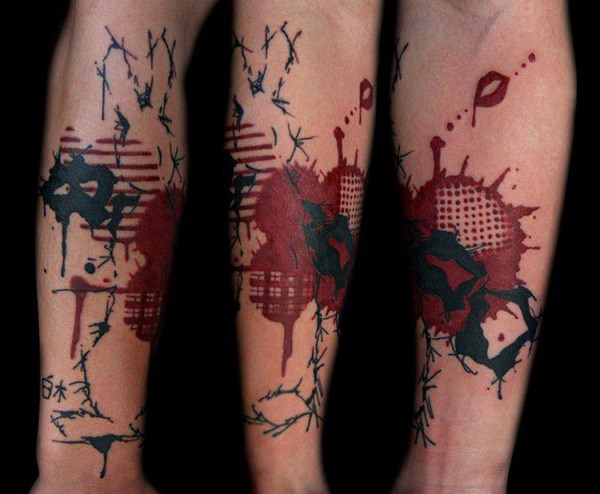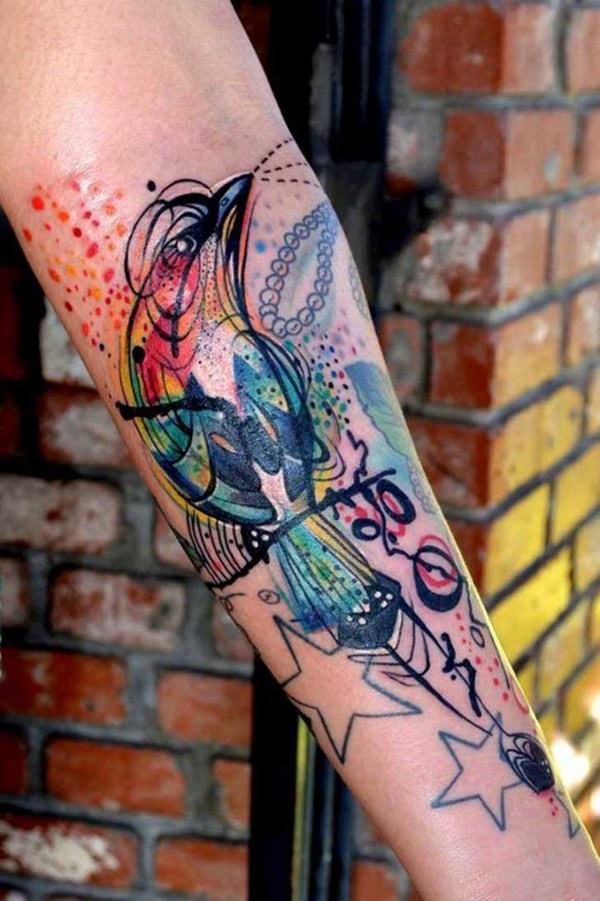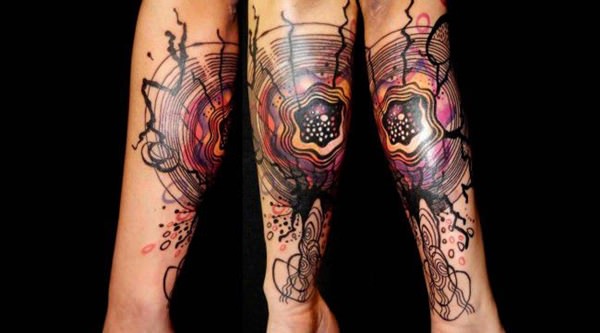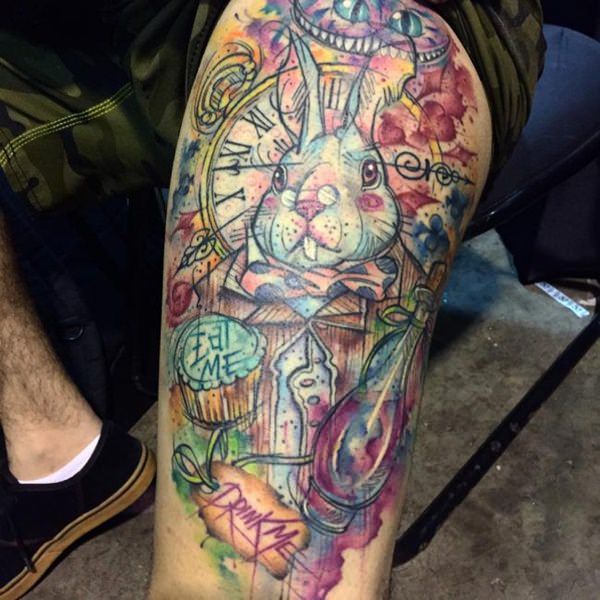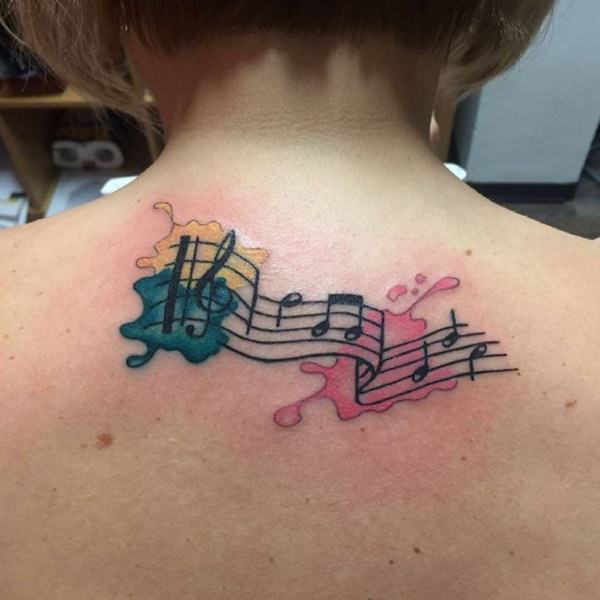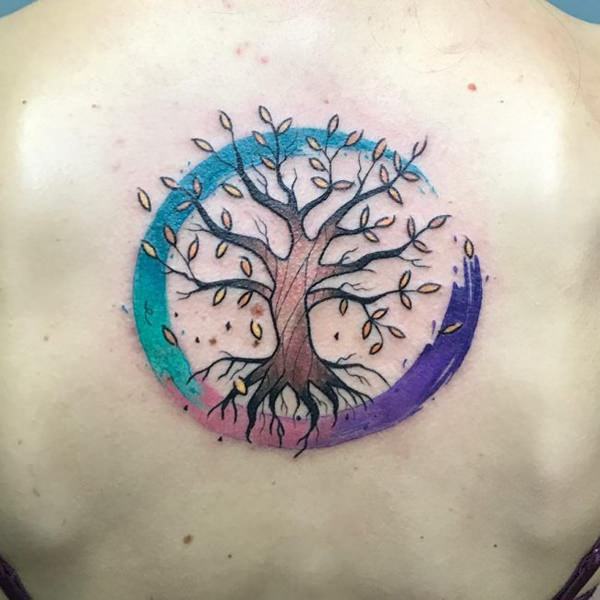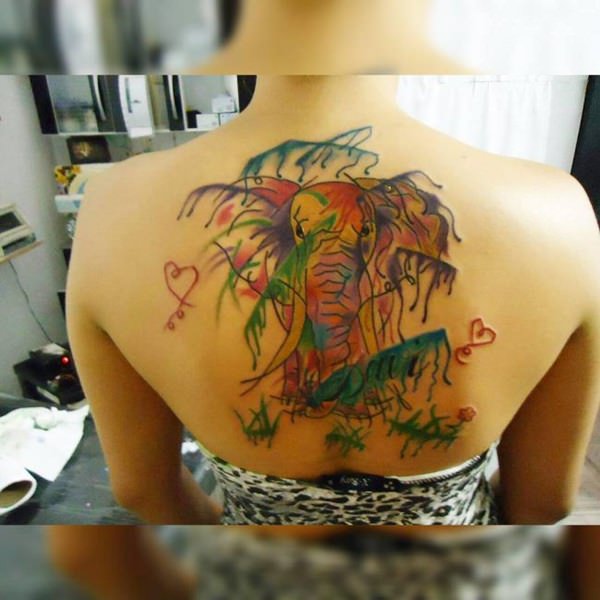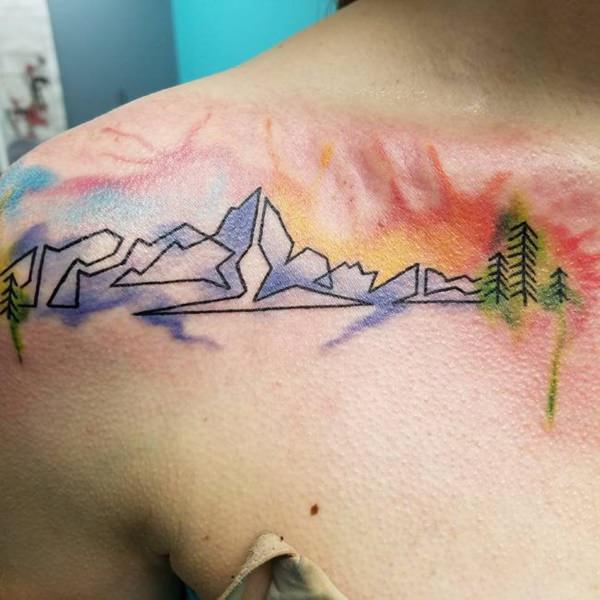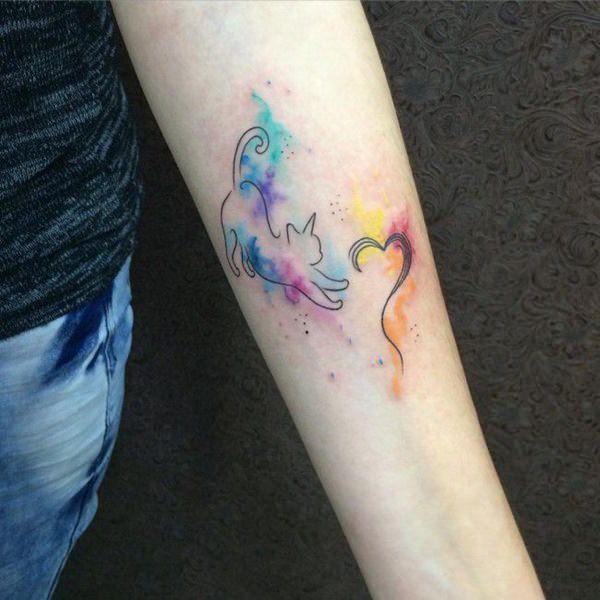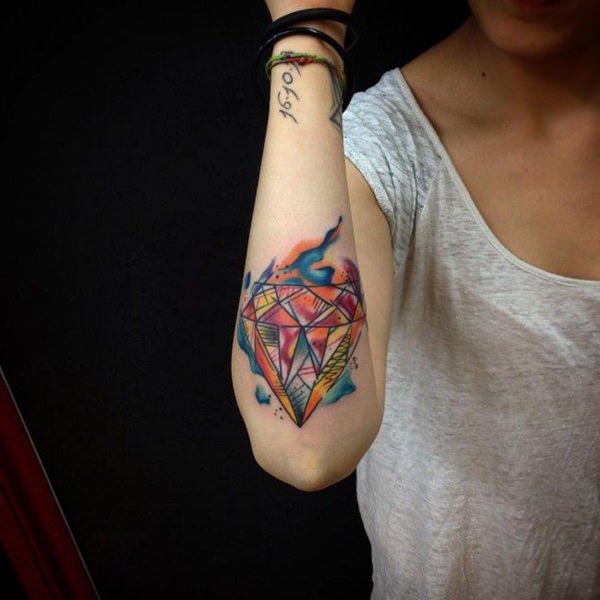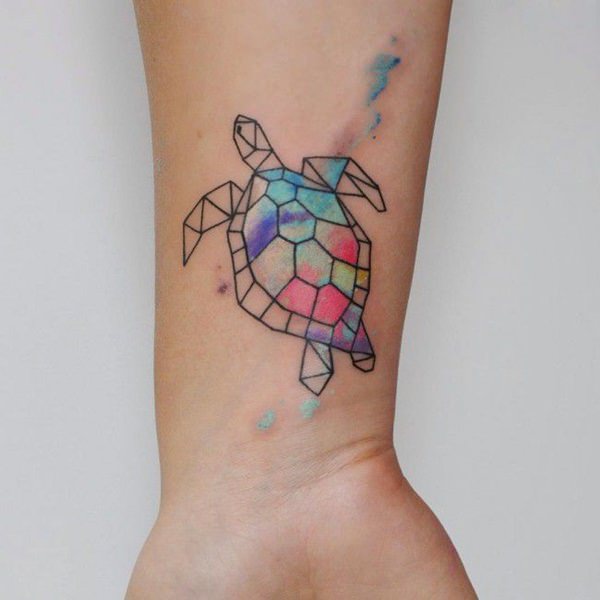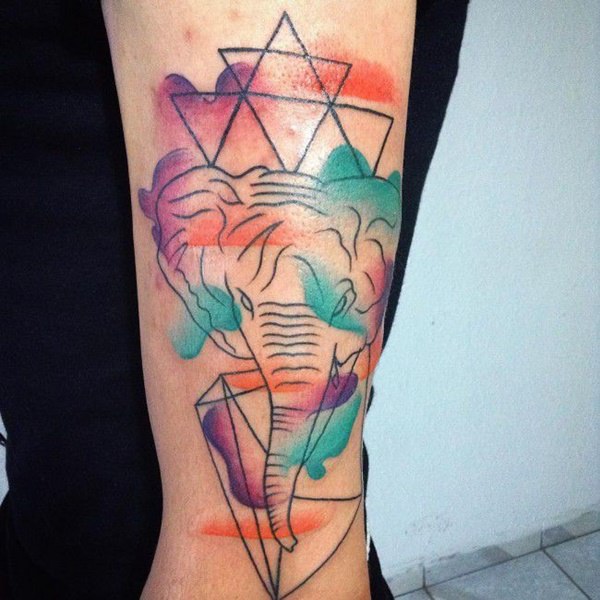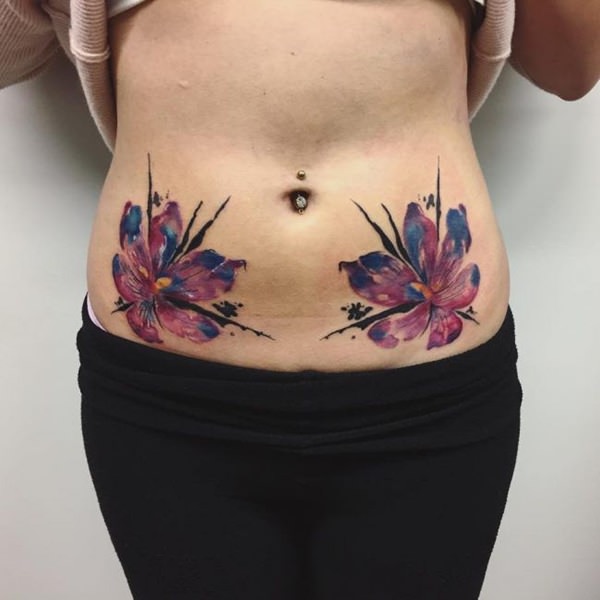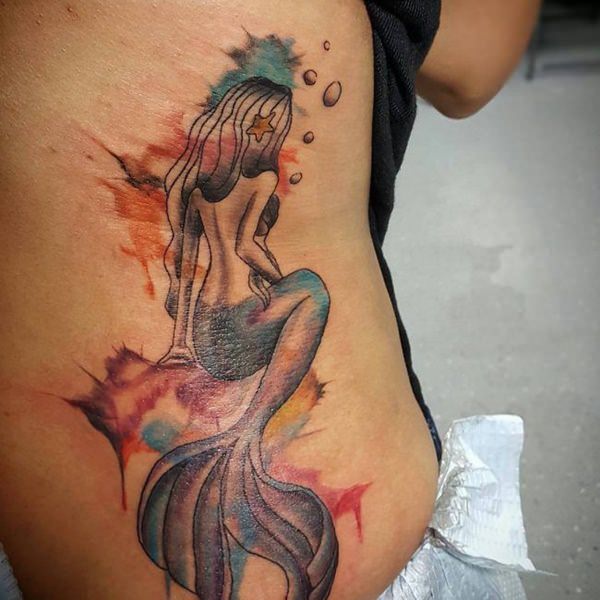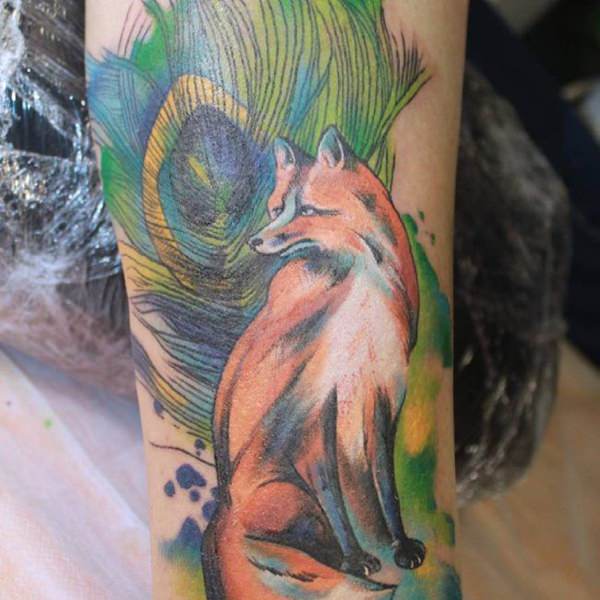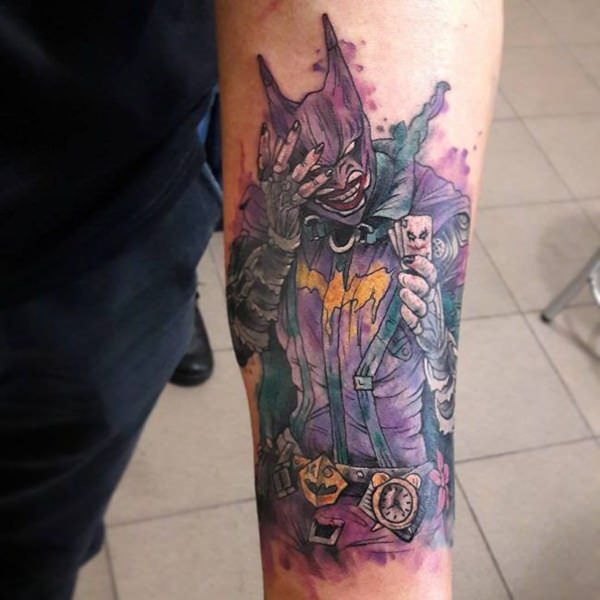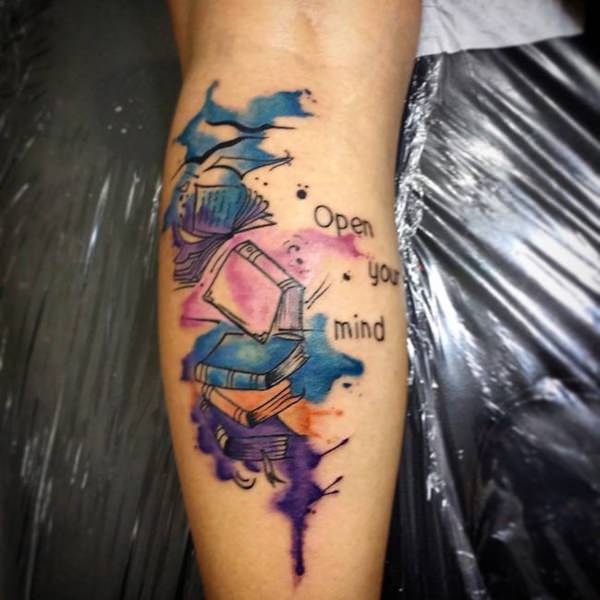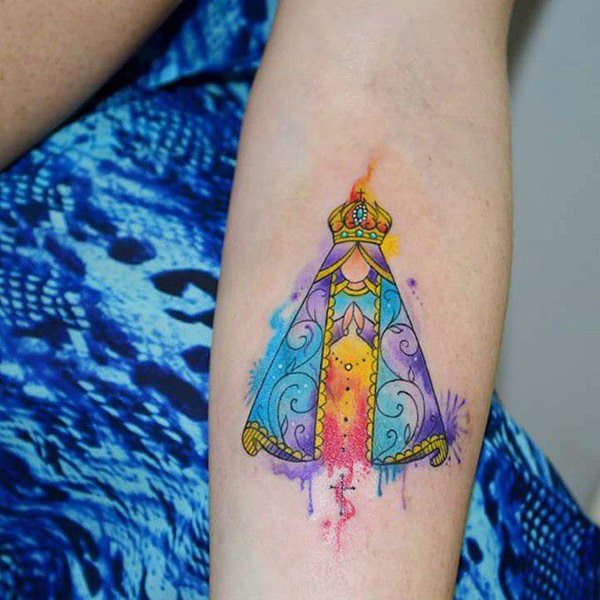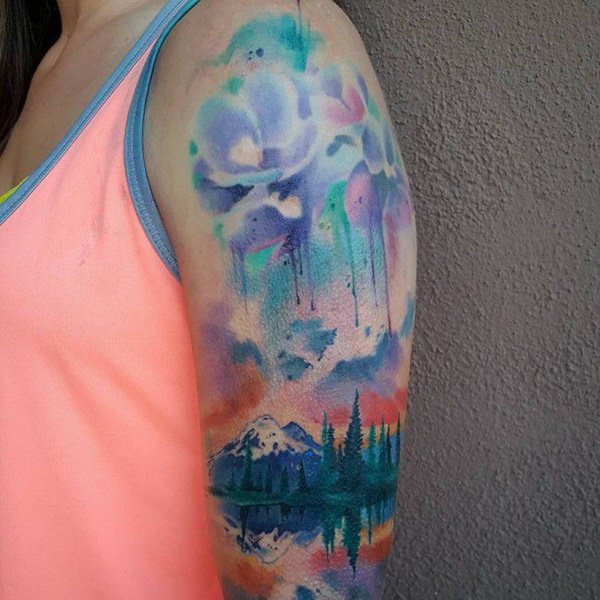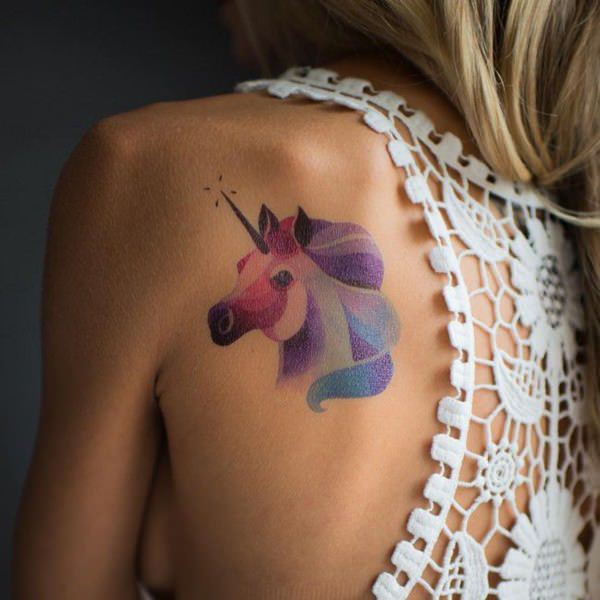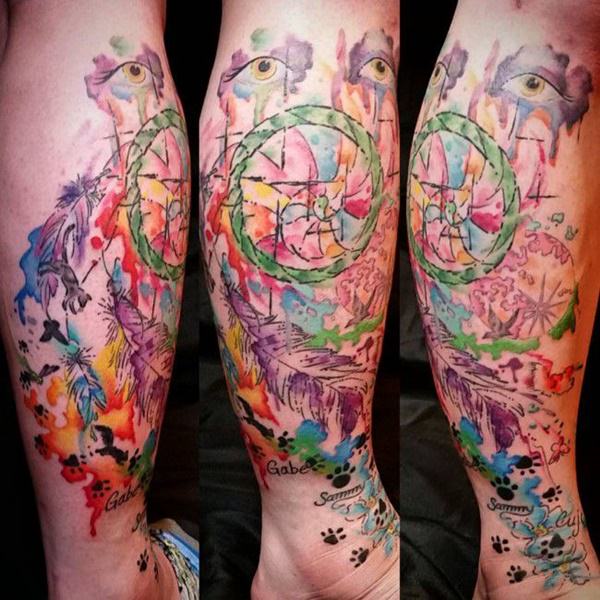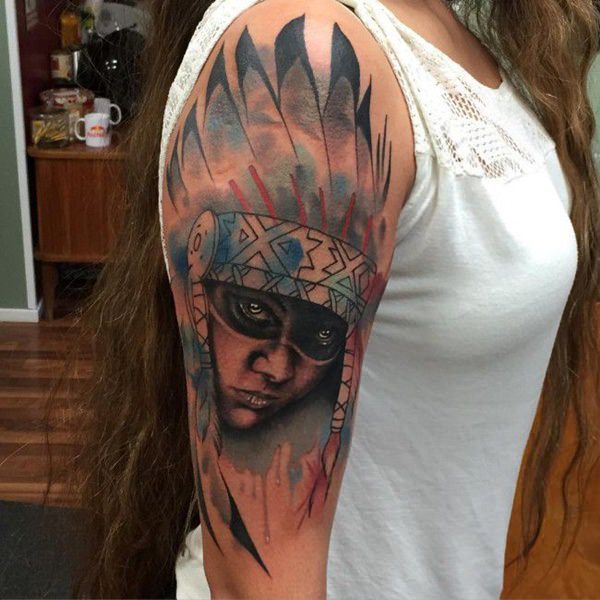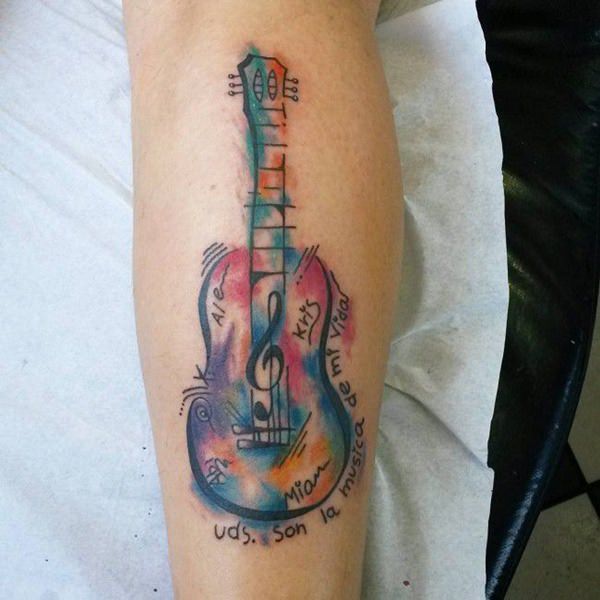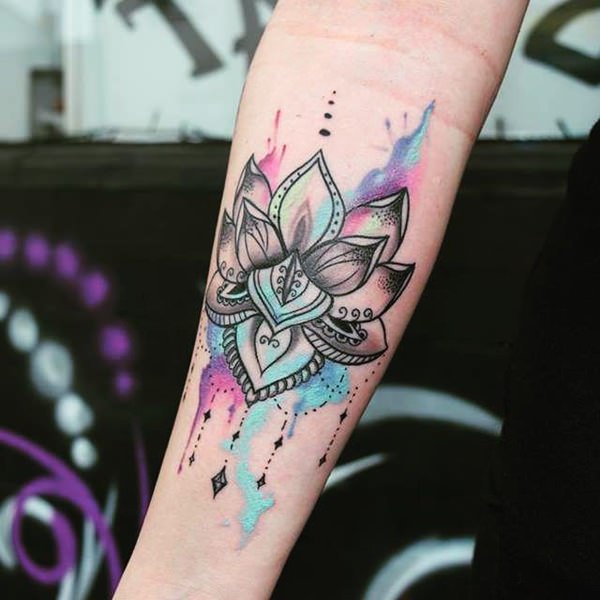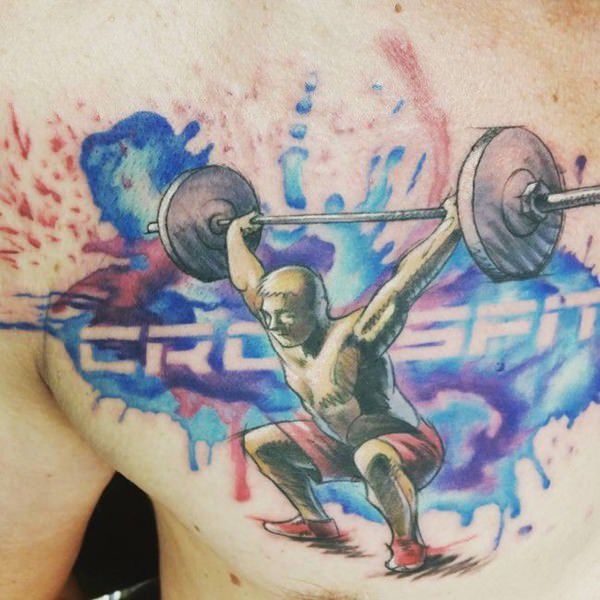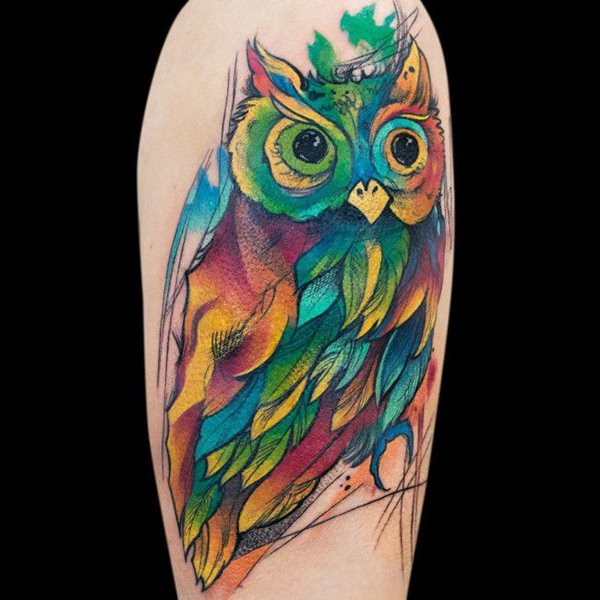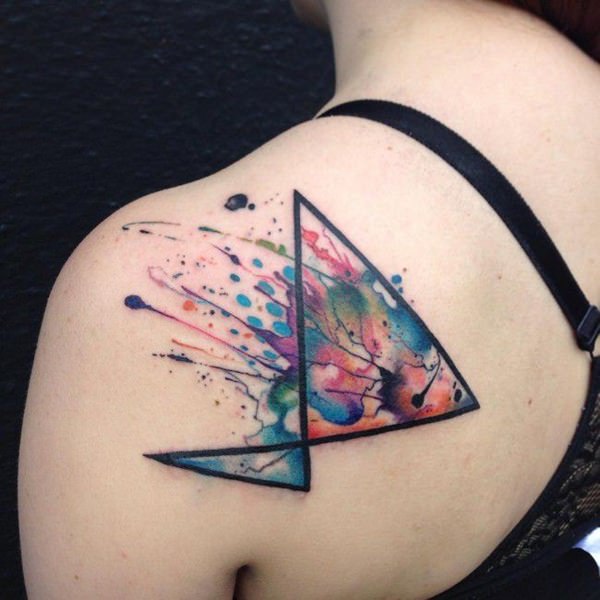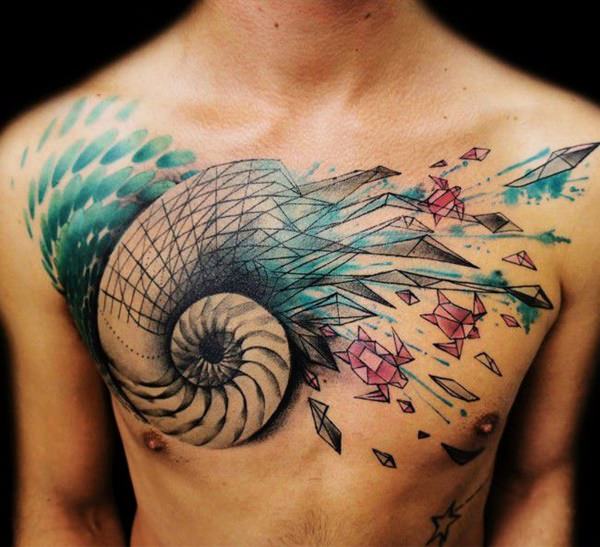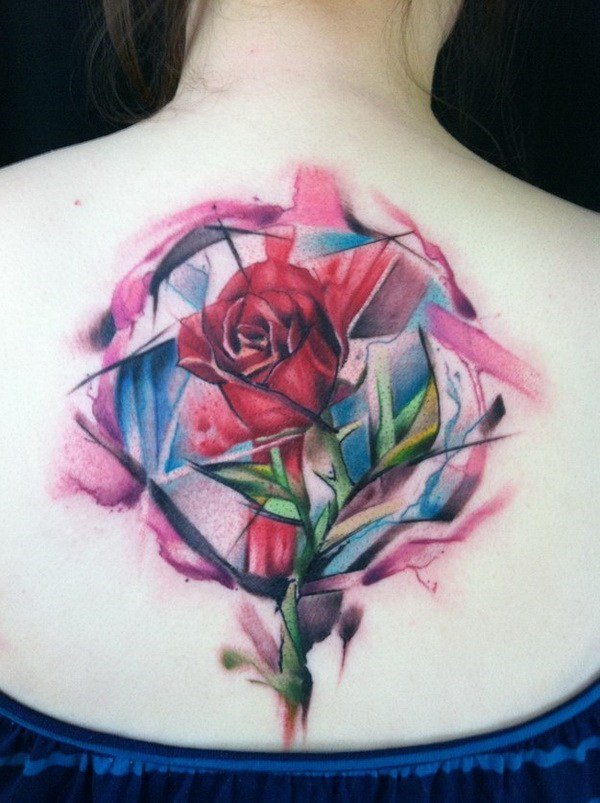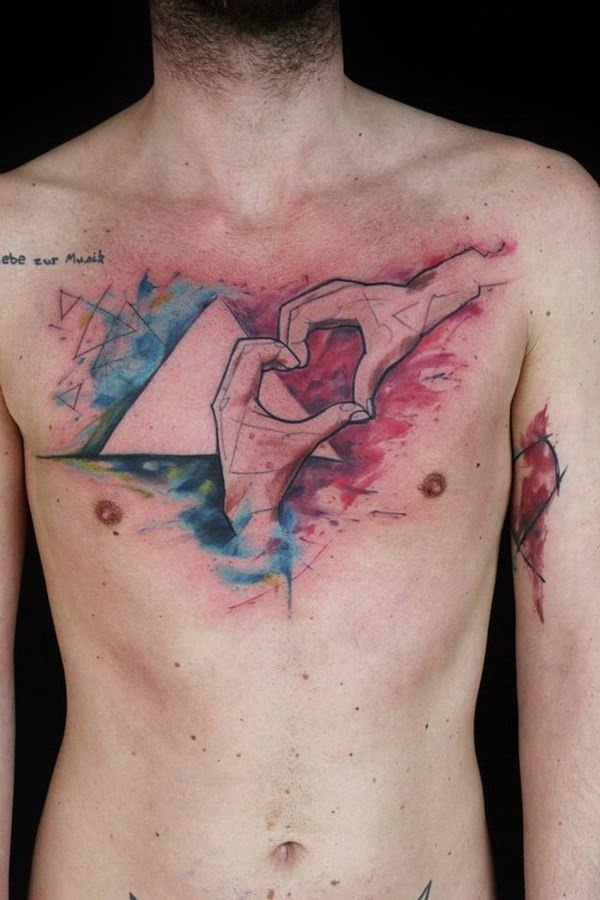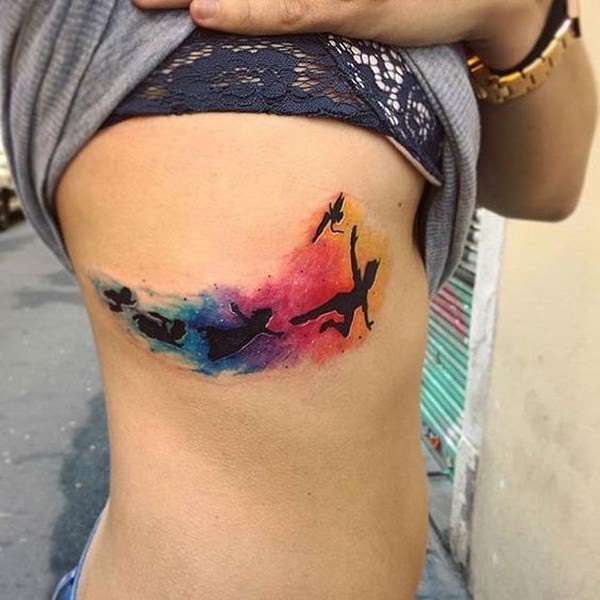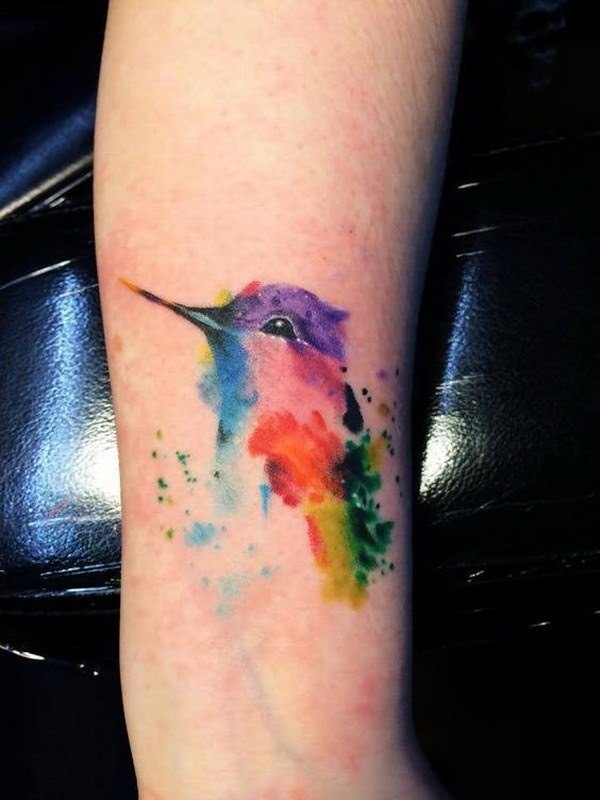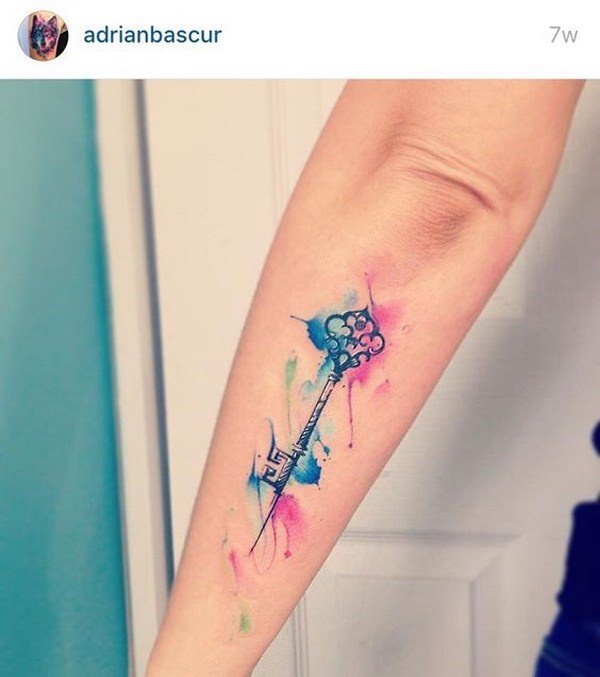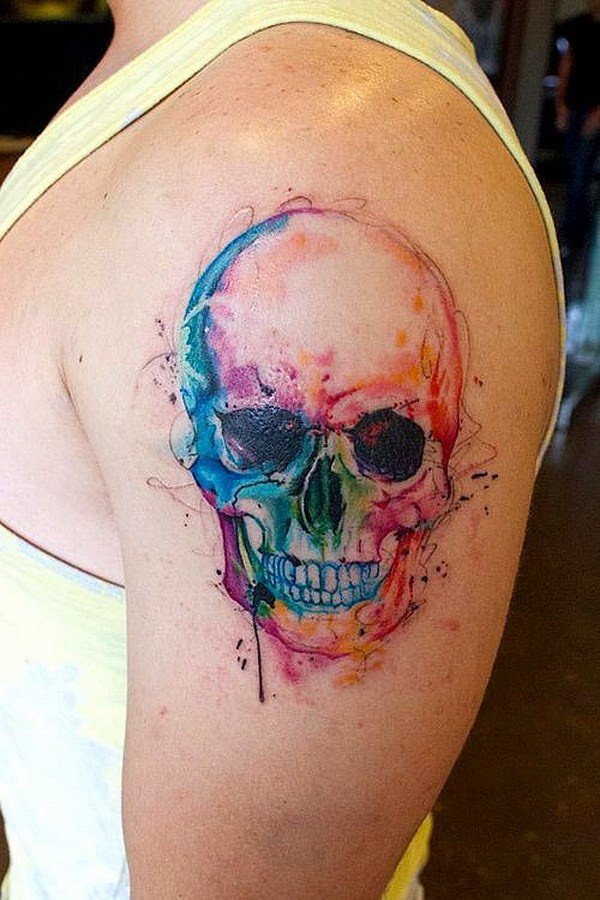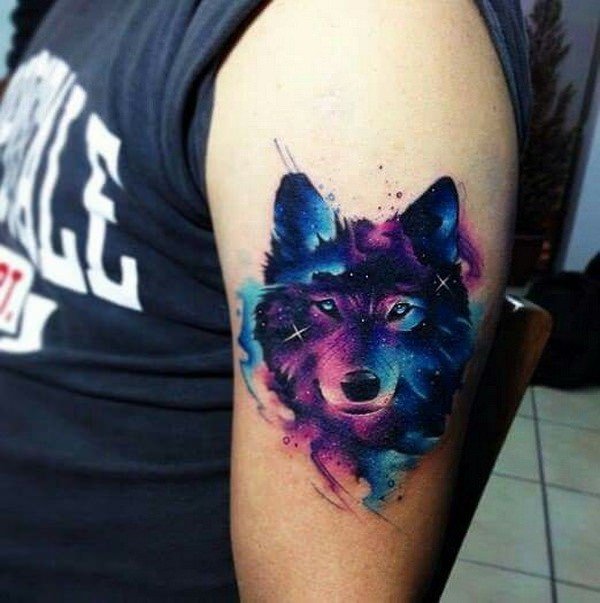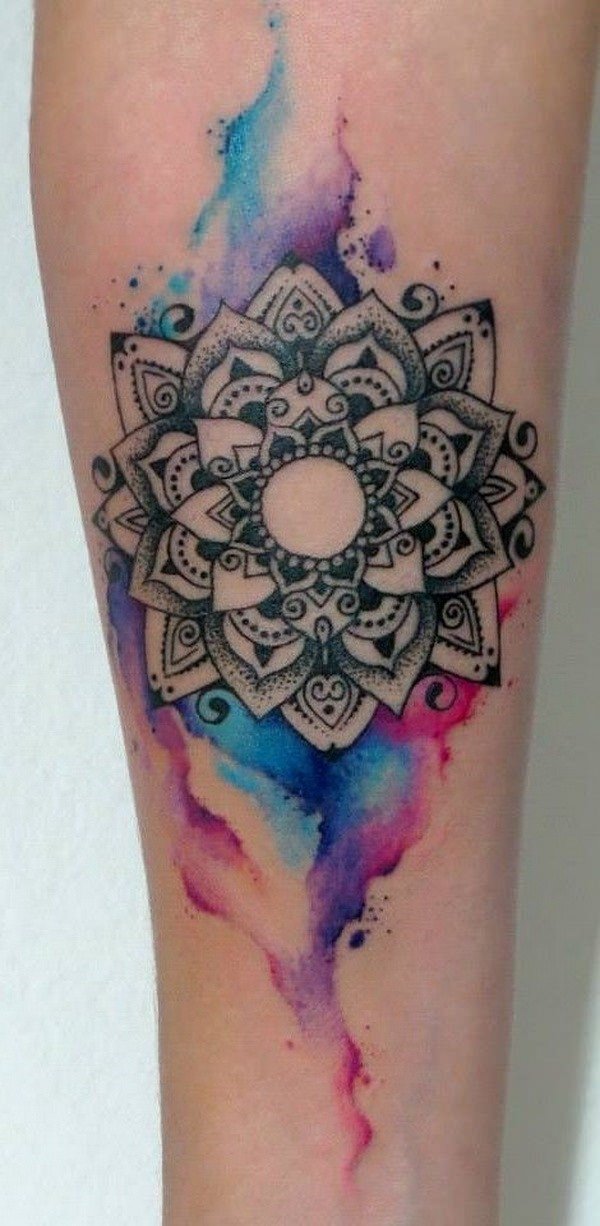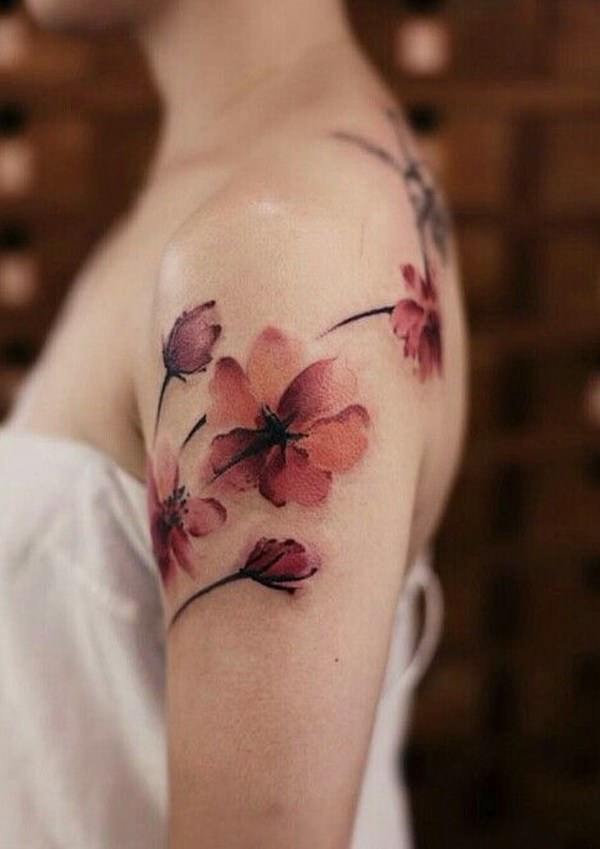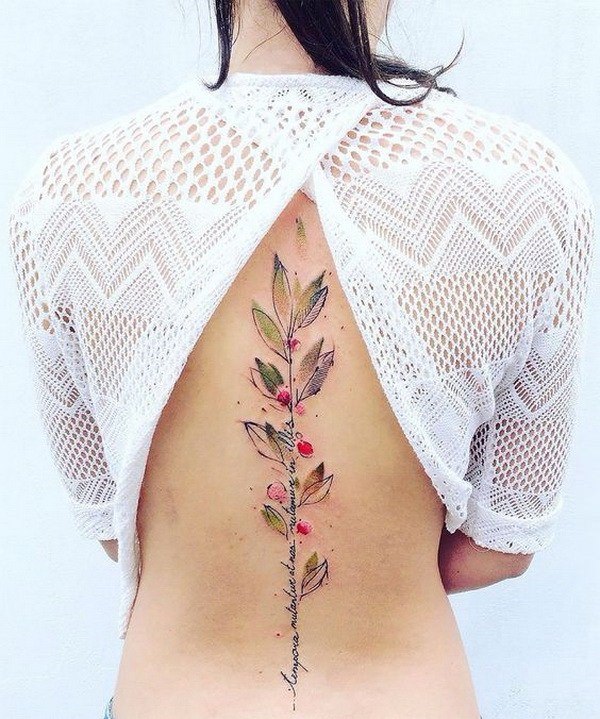Watercolor tattoos have become appealing to many tattoo enthusiasts because of their undeniable aesthetic appeal. With beautiful colors, your skin becomes a work of art. Tattoo artists have explored a wider variety of styles and techniques to express themselves and make their ideas come to life. Long ago, most people would only typically get American Traditional style tattoos. Today, a large selection of styles are available. You can even choose abstract, minimalism, realism and watercolor styles among others.
Still, there are pros and cons to getting this type of tattoo. A watercolor tattoo is generally the same as a regular one. However, it involves distinctive style and shading techniques. Some people are also wary of fading issues. A common worry is that watercolor tattoos might lose their vibrancy more quickly than conventional tattoos.
Before getting this kind of lovely tattoo, take time to find out the advantages, disadvantages and process involved. This article will cover everything you should know about watercolor tattoos. By the end of this article, hopefully you’ll know if this vibrant tattoo is the right choice for you.
Watercolor Tattoos Explained
As the name suggests, a watercolor tattoo takes inspiration from watercolor paintings. In this type of tattoo, various shades of colors smoothly complement one another. They subtly fade out at the edge rather than end in sharp lines compared to traditional tattoos. The origins of watercolor tattoos are quite interesting. Artists wanted to defy the traditional practices in the tattoo industry.
While American Traditional tattoos are timeless, artists wanted to try out more techniques. Contemporary artists chose to go beyond limitations, leading to the discovery of watercolor style. Some standout artists would skip black outlines around tattoos. They would create beautiful results that look just like a work of art.
It’s easy to identify a watercolor tattoo at a glance. It looks like it has been painted on your skin. The main characteristics of this type of tattoo are soft, subtle hues. Brushstrokes and drips also adorn various shapes. Together, these elements create a painting-like result that attracts the eye.
Artists can transform almost any image into watercolor tattoos. Nature is a common theme, especially flowers, which bring a soft, feminine vibe to designs. Old-school, traditional designs are not quite popular when it comes to watercolor tattoos. You may opt for natural and organic imagery, from feathers and florals to animals and plants. Abstract shapes are also easy to incorporate into watercolor-style tattoos. Your artist may tailor the design to your personal preferences. Be sure to discuss your ideas freely before going in for an appointment.
How are Watercolor Tattoos Made?
Artists generally use similar tools and basic application methods when creating tattoos. Some of the tools necessary for tattooing include inks, stencils, needles and cleaning materials. First, an artist dips the needle into the ink and pokes it into the client’s skin. This process is basically the same as most other tattooing styles.
However, watercolor themes can be much more time consuming. They demand filling in color accurately and carefully. Compared to a single-tone design, a complete watercolor piece may require plenty of blending and shading. The more colors are involved, the longer it may take to finish a vivid watercolor tattoo. Still, accomplishing a watercolor tattoo is not that hard for seasoned artists. A design the size of a palm may take around one to two hours to finish.
Before performing the tattoo session, a professional artist will draw out the design digitally or on paper to prepare. Some artists opt to paint their designs instead of using pencil. Then, they trace the painting and turn it into a stencil. They will then transfer the stencil to the client’s skin.
Exceptional artistic skills are important when creating watercolor-style tattoos. Like painting on blank canvas, artists must apply techniques such as color running and bleeding, splattering, shading, and blurring among others. An adept artist will be able to achieve beautiful watercolor effects and a long-lasting ink.
Kinds of Watercolor Tattoos
Watercolor Tattoos With No Dark Foundation
Some watercolor tattoos do not have any apparent black linework. Artists may opt for a different color instead of black to create the linework. Without a black base, a watercolor tattoo looks more like a painting. The hues appear to seamlessly blend into the skin. There are no strong edges either. You’ll typically see filmy shading that almost erases the appearance of edges. Head-turning watercolor tattoos without a dark base combine various colors to create stunning results.
Watercolor Tattoos With a Dark Foundation
When an artist applies a dark base, there’s usually some sort of foundational shadow or linework in the tattoo. The artist then tops it with colors and fills in spaces with hues. In watercolor tattoos with a dark base, you’ll see hints of a black outline beneath the colors. This creates more contrast than tattoos that lack a dark base. The application of bold elements and colorful ones creates an appealing combination that immediately draws the eye. Some artists also say that this type of watercolor tattoo is more long-lasting. Skilled artists are able to blend black seamlessly into the watercolor tattoo’s shades and hues. This process takes expertise and skill, so be sure to choose the best artist around.
On Which Body Part Should I Get a Watercolor Tattoo Done?
Just like any other tattoo, where you choose to have a watercolor tattoo depends on your personal preferences and circumstances. Your type of profession might demand a clean appearance with no visible traces of tattoo. In this case, you can have your tattoo placed on easily covered areas. For example, you can have a watercolor tattoo on your hip area, leg, back or torso.
Those who want to show off their tattoos everyday can have their tattoos done on more prominent areas. For instance, you can get a watercolor tattoo on your arm, wrist, shoulder or neck. Remember though that watercolor tattoos need protection against sunlight. Those without black bases demand particular care. They might fade more quickly if they become exposed to sunlight frequently.
Watercolor tattoos look great on light skin colors because tattoo inks appear rather translucent. It’s best to choose areas that are typically not directly exposed to the sun to preserve the beauty of your tattoo.
What are the Pros of Getting Watercolor Tattoos?
The standout aesthetic appeal of watercolor tattoos are a major reason why many people want them. They are undeniably beautiful and eye-catching. Your skin becomes a canvas for a piece of art that undoubtedly attracts attention. You’ll draw praises from others. Compared to standard tattoos with dark, strong lines, watercolor tattoos look rather ethereal and easy on the eye. Just be sure to get your watercolor tattoo from an experienced artist to make sure the result looks magnificent.
For some people, the natural lightening of watercolor tattoos after some time makes the tattoos actually look more visually pleasant. Watercolor-style tattoos may require less frequent touch-ups compared to traditional tattoos. They exhibit less saturation that need minimal maintenance.
Getting rid of a watercolor tattoo is also much easier through laser removal. It has lesser ink and softer colors, making the removal process considerably faster.
Are There Disadvantages to Getting a Watercolor Tattoo?
While watercolor tattoos look exquisite with their soft, charming colors, they might have a tendency to fade faster. These tattoos are generally lighter and brighter with minimal contrast and dark colors. Still, the way you care for your tattoo will play an important part in preventing fast fading. Some people say that their tattoos remained vivid and colorful even after several years.
Also, choosing an expert artist who specializes in this particular style is critical. Experienced artists know how to apply a proper base and create contrast as necessary. Keep in mind though that whatever tattoo you get, fading is inevitable over the years. Even solid black tattoos will start to fade after some years. Visit your trusted tattoo artist for touch-ups when needed. Your artist will reinvigorate the overall look of your tattoo, making it appear fresh and new.
How to Pick the Right Watercolor Tattoo for You
Watercolor-style tattoos are quite a personal work of art. If you have certain design inspirations in mind, don’t hesitate to share them with your artist. Think about the most important things in your life. You may also want to consider distinctive objects and elements that best represent you and your lifestyle.
If you’re an animal lover, an image of your favorite animal would look great on you. A bird in flight may represent the importance of freedom for you. An image of the sun, moon, stars, flowers or abstract shapes are also great ideas. Whatever you choose, just be sure that the design suits your personal taste. You can ask for theme suggestions from your artist if you don’t quite know yet what you want. Also, browse throughout this extensive guide to see stunning examples of watercolor tattoos.
Watercolor Tattoo Ideas
Floral Tattoos With a Dark Outline
If you want something that highlights your feminine side, choose floral elements. Some floral tattoos may have a black, sketch-style outline. Your artist will then apply a bright or subtle color through a fading technique. To create a watercolor painting effect, artists typically add hints of drips.
Other watercolor tattoos have minimal drips. Colors appear to continue beyond the outlines by applying a fading technique. This creates the illusion of pigment bleeding onto the skin. It’s typical to see dots around watercolor tattoo designs for more aesthetic results.
Animal Tattoos Without Outlines
Using only pigments, artists emphasize the watercolor characteristics of a design. They use color to highlight smaller details. For example, they may blend in certain colors to form wing patterns and eye outlines. This technique creates a whimsical, painting-like effect. Skilled artists mix colors to create new hues.
Watercolor Background
In some designs, artists use watercolor as the backdrop. They don’t just fill in the design with colors. They use various pigments to attain a faded out look with a water-blotch hint. Light and dark splotches depict fluid color movement, like the smooth flow of water.
Dynamic Detailing
A tattoo can have a main design with clear, stark outlines. Then, a watercolor element can spring from that design for a dynamic, creative look. The explosion of vivid hues makes the tattoo look extra stunning. Your artist will overlap and merge colors to attain the look of watercolor pigments. The combination of dark patches and a vivid, colorful palette creates an outstanding piece of art.
Factors Affecting How Fast Watercolor Tattoos Age
Experts emphasize that any kind of tattoo starts to dissipate with time. Whether you have a watercolor, traditional, minimalist or abstract tattoo, several factors affect its aging process. Over the years, ink particles begin spreading out. Lines appear less sharper and the overall design might look muddier.
Some of the factors that can affect the dissipation of a tattoo after several years include the kind of ink used and skill of your tattoo artist. Your chosen tattoo design may also be a significant factor. Additionally, the health of your skin and proper aftercare and maintenance matter. Thus, you must follow aftercare instructions carefully. Avoiding sun exposure will also affect how well your tattoo ages.
Maintenance Tips to Prolong Your Watercolor Tattoo
As mentioned earlier, some critics say that watercolor tattoos usually fade faster. Since these tattoos typically use softer, brighter colors, there is a possibility for them to diminish in beauty more quickly if you don’t care for them properly. Thus, make sure to do the following tips to extend the lifespan of your beautiful tattoo.
Protect Your Tattoo From Direct Exposure to Sunlight
Harsh sunlight is the top cause of fading among all kinds of tattoos. If you’re always out in the sun, it helps to cover your particular tattoo area to prevent unwanted fading. Wear long sleeves if your tattoo is on your arm. Go for pants instead of shorts when hanging outdoors for a long time, if you have a tattoo on your leg. Remember that excessive and regular exposure to damaging sun rays will undoubtedly make your watercolor tattoo fade away. Always apply sunscreen that offers adequate protection from sun rays when you’re out and about.
Use Moisturizer Regularly
In addition to applying sunscreen, it also helps to nourish your skin with moisturizer. Taking care of your skin helps prolong the lifespan of your tattoo. It’s essential to keep it properly hydrated. If your skin is well-moisturized, it won’t look saggy, wrinkled or dry. Choose a high-quality lotion for sensitive skin. Skip scented lotions. Ask your artist for recommendations when buying a lotion to use during the healing process and afterward when your tattoo has fully healed. Besides proper hydration, keep in mind that your overall lifestyle will affect the lasting condition and beauty of your tattoo.
Minimize Friction
Avoid getting a watercolor tattoo on areas that are prone to frequent rubbing. Constant friction may affect the lifespan of your tattoo. To make it last longer, be sure to avoid scratching your tattoo area too much. Frequent scratching and rubbing will cause the area to become irritated. Your ink might also become dull and lighter.
Selecting the Right Artist
To make sure your ink lasts vividly as long as it can, you need to choose an excellent tattoo artist. Don’t settle for inexpensive options just to save money. You’ll most likely regret paying for a cheaper tattoo, only to find out that it will fade easily. Also, be wary of novice artists who might just be practicing new techniques on you. Ensure that you’re choosing a seasoned professional who has mastered the art of watercolor tattooing.
Ideally, your selected artist should have done the watercolor style numerous times before. Get suggestions from people you know. Ask around to find out if there are bad experiences with your prospective artist. In the hands of an expert artist, you’ll get satisfying, long-lasting results.
Ask lots of questions when interviewing your potential artist. A good artist will discuss ideas with you and consider your recommended elements and designs. Check the website and social media pages of different artists to check their work. Also, try to read online reviews if there are any.
Conclusion
Whether you opt for a minimal design on your arms or geometric shapes on your wrists, a watercolor tattoo will add beauty to your skin. Talk to your artist before going in for a tattoo session. Express your ideas on how you want the result to look like. In the hands of a well-experienced and incredibly skilled artist, you’ll get a tattoo that looks amazing and stands the test of time.
And once you have your watercolor-style tattoo, make sure to follow the proper aftercare routine to speed up the healing process. Avoid exposing your new tattoo to dampness and sunlight as it heals. Keep the tips above in mind to maintain a fresh-looking and gorgeous tattoo for a long time ahead. If you properly care for your tattoo, you’ll likely require minimal touch-ups over the years.
